Sing, Sing a Song!
 Singing is a natural part of childhood. Most babies are surrounded by it, with parents and grandparents singing to them and music playing in our cars and homes. As children get older, they begin to play song games—they learn the alphabet and how to find their heads, shoulders, knees and toes. They begin to sing along at birthdays and holidays. They begin to make up songs, to dance and play with music. In school, they learn new songs and how to sing in groups. And as they grow into big kids, they ask you turn up the volume in the car for a Taylor Swift sing-along (if you're lucky!).
Singing is a natural part of childhood. Most babies are surrounded by it, with parents and grandparents singing to them and music playing in our cars and homes. As children get older, they begin to play song games—they learn the alphabet and how to find their heads, shoulders, knees and toes. They begin to sing along at birthdays and holidays. They begin to make up songs, to dance and play with music. In school, they learn new songs and how to sing in groups. And as they grow into big kids, they ask you turn up the volume in the car for a Taylor Swift sing-along (if you're lucky!). At Villa di Maria, singing is woven into our curriculum at every level—it is a common (and lovely) experience to hear songs coming from our classrooms. And while nothing beats the joyous sounds of children's voices, the real value in singing is not something we can hear at all; the real value is what's happening inside the brain.When we sing, our brains are exercising the auditory and visual pathways, processing language, controlling our vocal cords for pitch, regulating our breathing, accessing memory, recognizing and using patterns, tapping into motor control structures for rhythm, expressing personality and creativity and releasing endorphins. All of these things are happening at the same time when we sing—it is a top-to-bottom workout for the brain.Children especially benefit from this multitasking because their brains are growing and learning. In just a few songs, children learn new vocabulary and rhyming. They practice listening and following directions. They learn to enunciate and control the volume of their voices. They concentrate and memorize. They work together to sing in unison or in rounds. They exercise their imaginations and express themselves. Singing also offers the opportunity to practice posture and body-control.And there's something else: when children sing to perform, they build confidence. They learn that their voices can be powerful and beautiful. They learn to take take pride in themselves and their creativity. This benefits not only the children themselves, but also those of us who are lucky enough to be in their audience and in their lives.
At Villa di Maria, singing is woven into our curriculum at every level—it is a common (and lovely) experience to hear songs coming from our classrooms. And while nothing beats the joyous sounds of children's voices, the real value in singing is not something we can hear at all; the real value is what's happening inside the brain.When we sing, our brains are exercising the auditory and visual pathways, processing language, controlling our vocal cords for pitch, regulating our breathing, accessing memory, recognizing and using patterns, tapping into motor control structures for rhythm, expressing personality and creativity and releasing endorphins. All of these things are happening at the same time when we sing—it is a top-to-bottom workout for the brain.Children especially benefit from this multitasking because their brains are growing and learning. In just a few songs, children learn new vocabulary and rhyming. They practice listening and following directions. They learn to enunciate and control the volume of their voices. They concentrate and memorize. They work together to sing in unison or in rounds. They exercise their imaginations and express themselves. Singing also offers the opportunity to practice posture and body-control.And there's something else: when children sing to perform, they build confidence. They learn that their voices can be powerful and beautiful. They learn to take take pride in themselves and their creativity. This benefits not only the children themselves, but also those of us who are lucky enough to be in their audience and in their lives. Here at VdM, we have two formal performances, our Winter and Spring Concerts. Tomorrow, we'll peek in on our Children's House singers as they prepare for the upcoming Winter Concert. Stay tuned! Sources and suggested reading:Music, Language, and the Brain by Aniruddh D. PatelThe Singing Neanderthals: The Origins of Music, Language, Mind and Body by Steven Mithen"Children’s brains develop faster with music training" by Emily Gersema"How does the brain process rhythm?" by Elizabeth Kirkham"The neural control of singing" by Jean Mary Zarate
Here at VdM, we have two formal performances, our Winter and Spring Concerts. Tomorrow, we'll peek in on our Children's House singers as they prepare for the upcoming Winter Concert. Stay tuned! Sources and suggested reading:Music, Language, and the Brain by Aniruddh D. PatelThe Singing Neanderthals: The Origins of Music, Language, Mind and Body by Steven Mithen"Children’s brains develop faster with music training" by Emily Gersema"How does the brain process rhythm?" by Elizabeth Kirkham"The neural control of singing" by Jean Mary Zarate





 For those of us who love to see Santa, he will be here! (Don't forget, there's another special guest... keep reading.) Many of our families use this event for their Santa photo-ops. They are offered to our families at no cost by the talented photographers among our parent community.
For those of us who love to see Santa, he will be here! (Don't forget, there's another special guest... keep reading.) Many of our families use this event for their Santa photo-ops. They are offered to our families at no cost by the talented photographers among our parent community.

 And this year, we are thrilled to have another special guest—Steph Plant! Steph is an AMI Primary Guide and a former VdM Assistant. She is also an author and singer/songwriter. During Winterfest, Steph will sing songs from her nature-inspired children’s music album Moth Wings and Other Things. Copies of Steph's album, as well as her children's book The Slithering Snake, will be available to purchase at the event.
And this year, we are thrilled to have another special guest—Steph Plant! Steph is an AMI Primary Guide and a former VdM Assistant. She is also an author and singer/songwriter. During Winterfest, Steph will sing songs from her nature-inspired children’s music album Moth Wings and Other Things. Copies of Steph's album, as well as her children's book The Slithering Snake, will be available to purchase at the event.
 The very best part of Villa di Maria is our people. Our community of families, faculty and staff is something to be proud of. In this series, We are VdM, we’ll highlight the energies, talents, humor and wisdom of some of our amazing people. Today we’ll kick off the series by featuring the Strongs, Maya and her parents Pratistha and Charles. Maya is in her first year in Lower Elementary with Ms. Megan. This is the Strongs' second year here at VdM.Villa di Maria: Tell us a bit about you and your family.Pratistha: We are three free spirits trying to figure life as we go along. I am Nepali, born in Kathmandu, but raised mostly in Texas. Charles is half-Dominican, half-Okie, with a dash of Chikasaw, born and bred in Texas. Maya is an amalgam of us—trilingual (she is even trying to learn French now), loves anything spicy, and she truly lives up to her name: Maya means love or illusion in Nepali.
The very best part of Villa di Maria is our people. Our community of families, faculty and staff is something to be proud of. In this series, We are VdM, we’ll highlight the energies, talents, humor and wisdom of some of our amazing people. Today we’ll kick off the series by featuring the Strongs, Maya and her parents Pratistha and Charles. Maya is in her first year in Lower Elementary with Ms. Megan. This is the Strongs' second year here at VdM.Villa di Maria: Tell us a bit about you and your family.Pratistha: We are three free spirits trying to figure life as we go along. I am Nepali, born in Kathmandu, but raised mostly in Texas. Charles is half-Dominican, half-Okie, with a dash of Chikasaw, born and bred in Texas. Maya is an amalgam of us—trilingual (she is even trying to learn French now), loves anything spicy, and she truly lives up to her name: Maya means love or illusion in Nepali. VdM: Where are you from and what brought you to Villa di Maria?Pratistha: Well, it is an interesting story. We were brought to Villa from a guide that Maya had in Jefferson City, MO. We were at a crossroads of where to go at the end of the school year a couple of years ago. Maya's guide told us about this little school in Kirkwood that she thought would be a good fit for us. We were looking for AMI schools all over Texas, but decided to drive up for a weekend trip to St. Louis after the suggestion was made. After checking it out and meeting with Laura Ceretti-Michelman, we knew we could just up and move to Kirkwood without any fear! People think we are crazy, but we moved to Kirkwood because of Villa di Maria! It has been the best decision that we have made not only for Maya, but for us as parents too!VdM: What do you do, career-wise?Pratistha: I am a primary care physician and Charles is a pharmacist. We own and operate Kathmandu Clinic, my hometown namesake, that is located in Kirkwood. Please visit my
VdM: Where are you from and what brought you to Villa di Maria?Pratistha: Well, it is an interesting story. We were brought to Villa from a guide that Maya had in Jefferson City, MO. We were at a crossroads of where to go at the end of the school year a couple of years ago. Maya's guide told us about this little school in Kirkwood that she thought would be a good fit for us. We were looking for AMI schools all over Texas, but decided to drive up for a weekend trip to St. Louis after the suggestion was made. After checking it out and meeting with Laura Ceretti-Michelman, we knew we could just up and move to Kirkwood without any fear! People think we are crazy, but we moved to Kirkwood because of Villa di Maria! It has been the best decision that we have made not only for Maya, but for us as parents too!VdM: What do you do, career-wise?Pratistha: I am a primary care physician and Charles is a pharmacist. We own and operate Kathmandu Clinic, my hometown namesake, that is located in Kirkwood. Please visit my  VdM: What is your favorite close-to-home family activity?Pratistha: We usually like to garden, whether it is in our own backyard or at Villa di Maria. We get really excited about growing food and medicine. We also enjoy hiking, going to museums, watching sci-fi, reading Harry Potter and finding fun places to eat around town.VdM: A question specifically for Maya, what has been your favorite part of Lower Elementary so far?Pratistha: Maya said she likes recess because she can now play all over the campus. She likes playing at the pavilion, in the field, and playing four square with the upper elementary kids. She also likes lunchtime! Her favorite new lesson is Animal Cards. She also likes the new variety of chores and added responsibility in the classroom.Thank you, Pratistha, Charles and Maya. We are so happy to have you in the VdM family!Photos courtesy of the Strongs, taken in Kathmandu in December 2018.
VdM: What is your favorite close-to-home family activity?Pratistha: We usually like to garden, whether it is in our own backyard or at Villa di Maria. We get really excited about growing food and medicine. We also enjoy hiking, going to museums, watching sci-fi, reading Harry Potter and finding fun places to eat around town.VdM: A question specifically for Maya, what has been your favorite part of Lower Elementary so far?Pratistha: Maya said she likes recess because she can now play all over the campus. She likes playing at the pavilion, in the field, and playing four square with the upper elementary kids. She also likes lunchtime! Her favorite new lesson is Animal Cards. She also likes the new variety of chores and added responsibility in the classroom.Thank you, Pratistha, Charles and Maya. We are so happy to have you in the VdM family!Photos courtesy of the Strongs, taken in Kathmandu in December 2018. 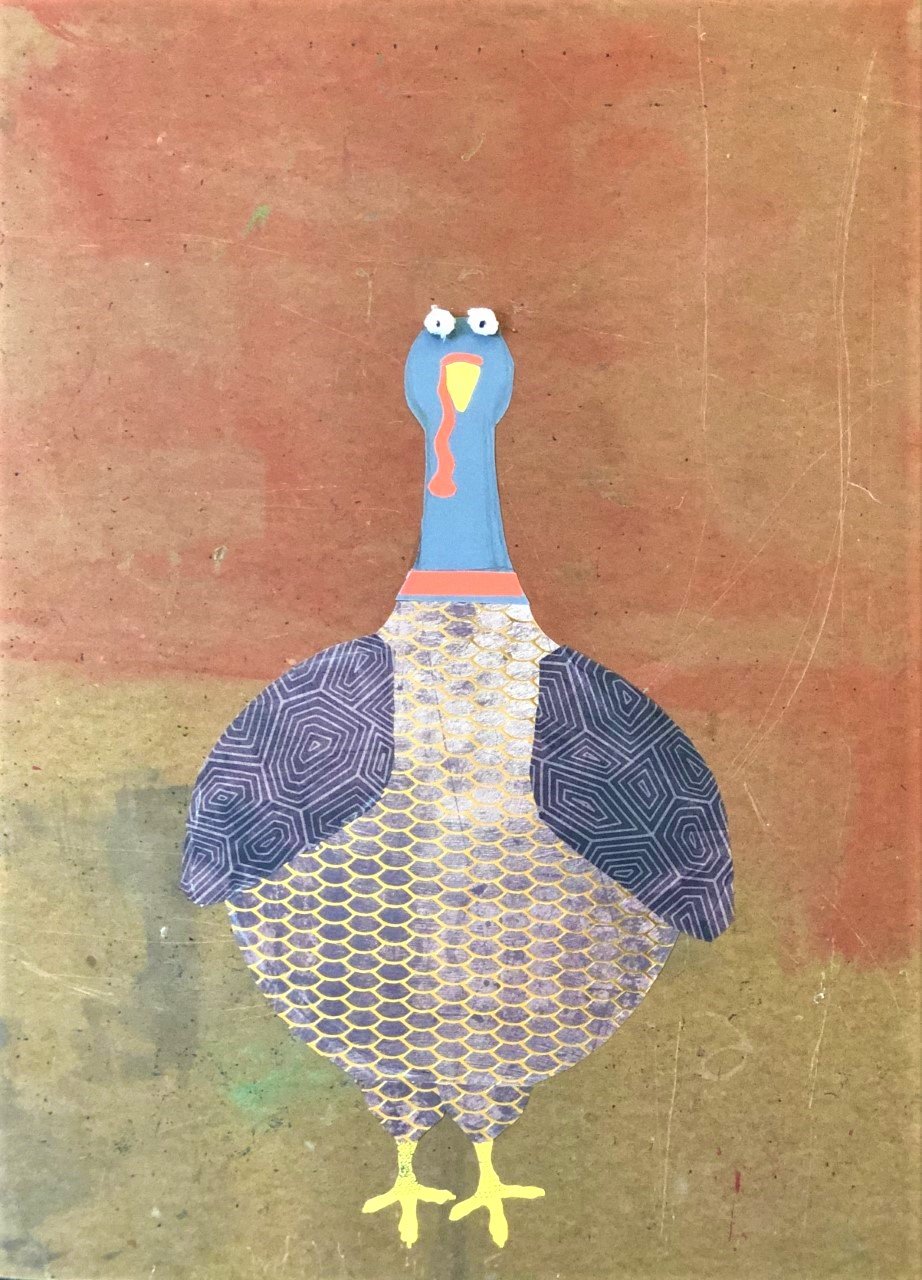 Last Thursday our Lower and Upper Elementary crews celebrated Thanksgiving with a feast and a party! Some children signed up to bring side dishes and pies...
Last Thursday our Lower and Upper Elementary crews celebrated Thanksgiving with a feast and a party! Some children signed up to bring side dishes and pies... 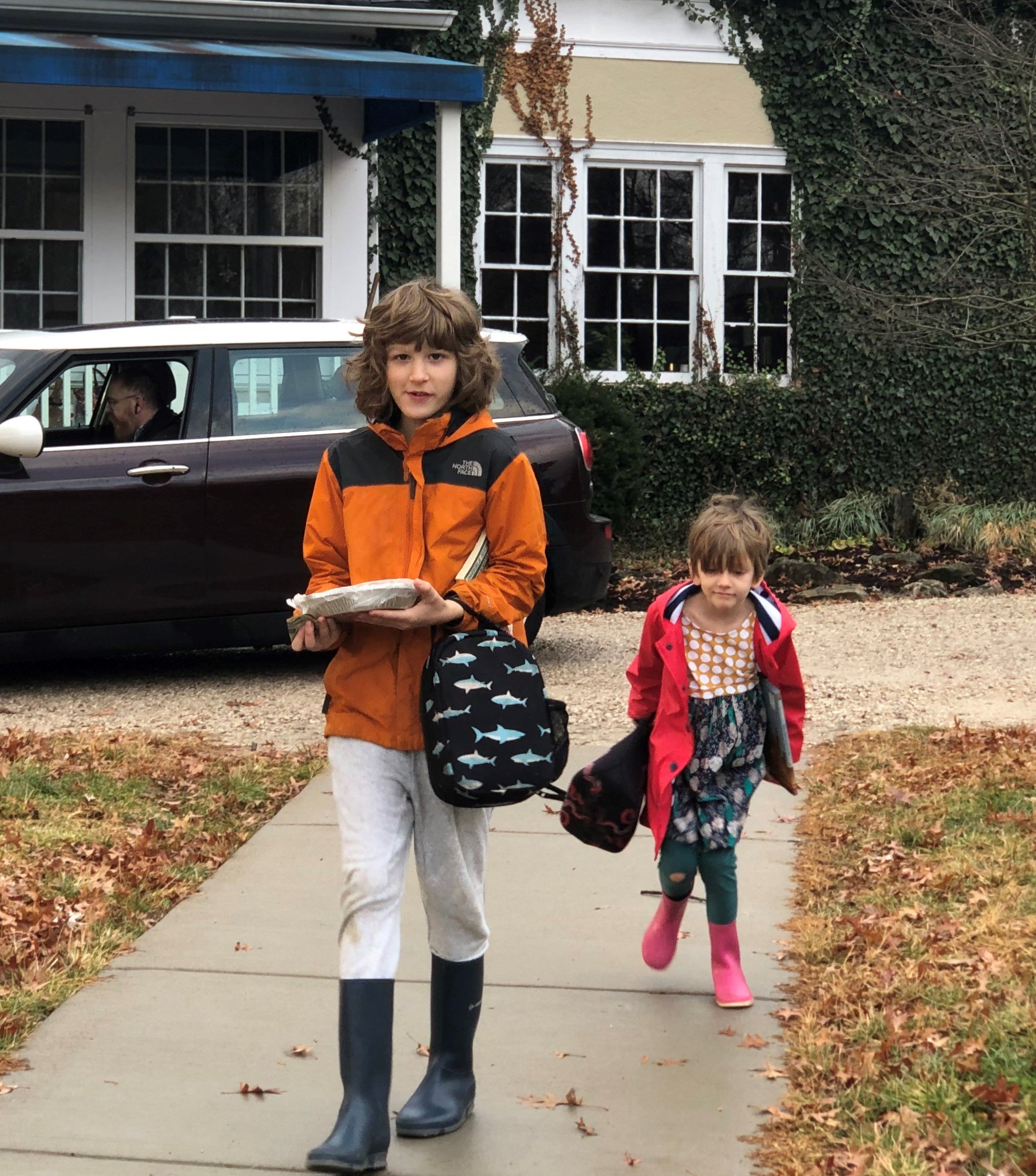
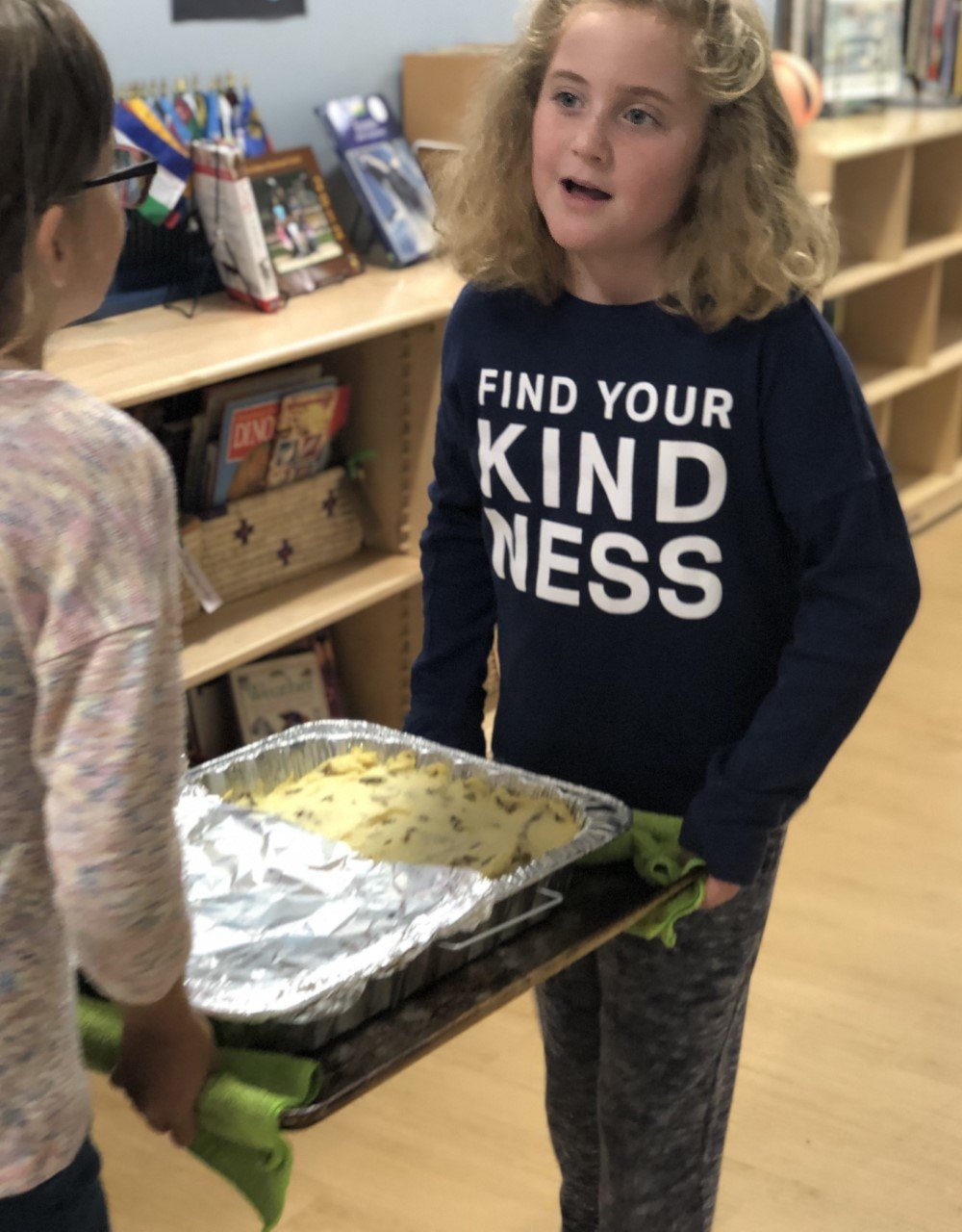 while others worked in the kitchen with Mr. Justin to prepare the main attractions.
while others worked in the kitchen with Mr. Justin to prepare the main attractions. 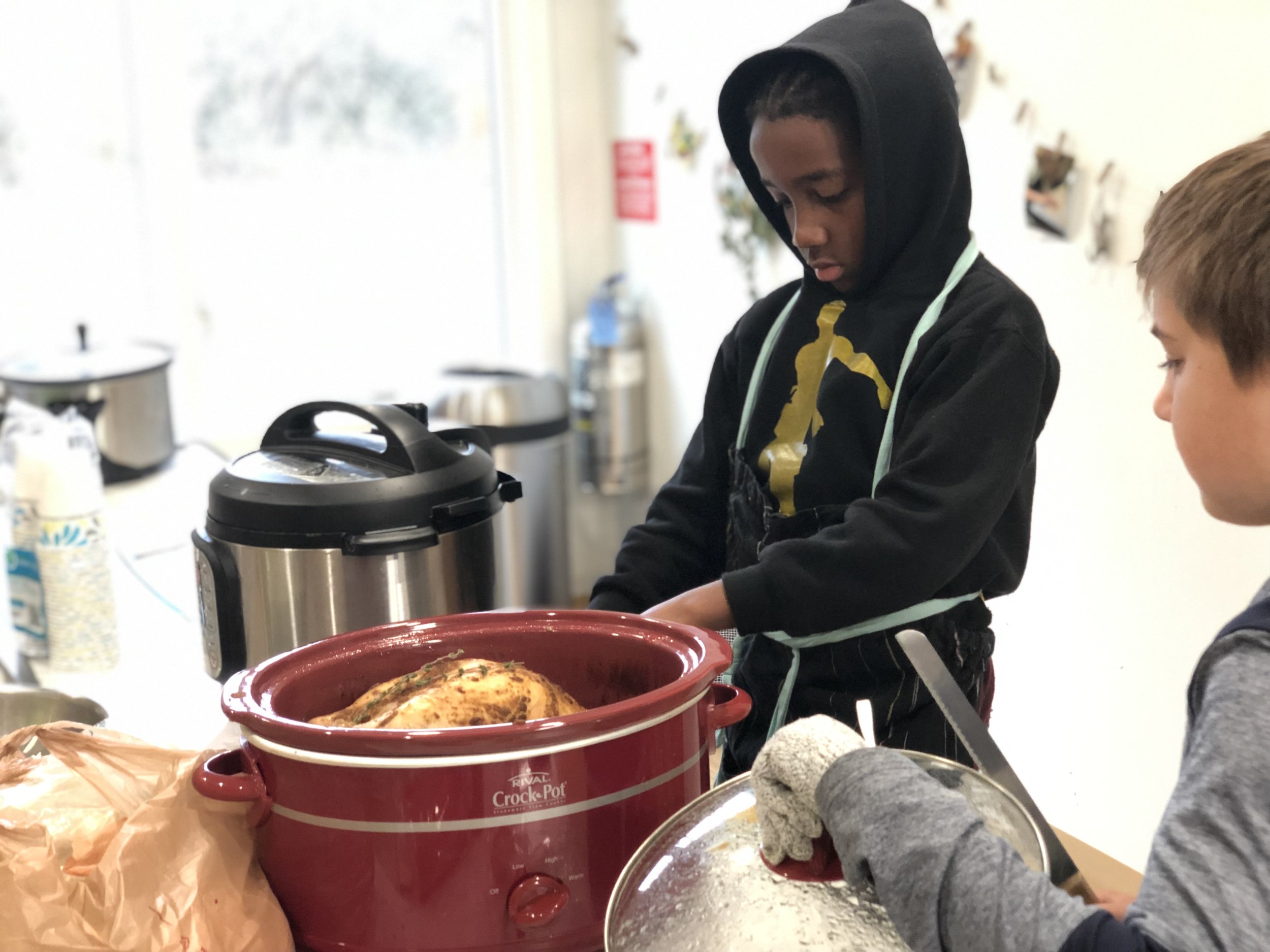
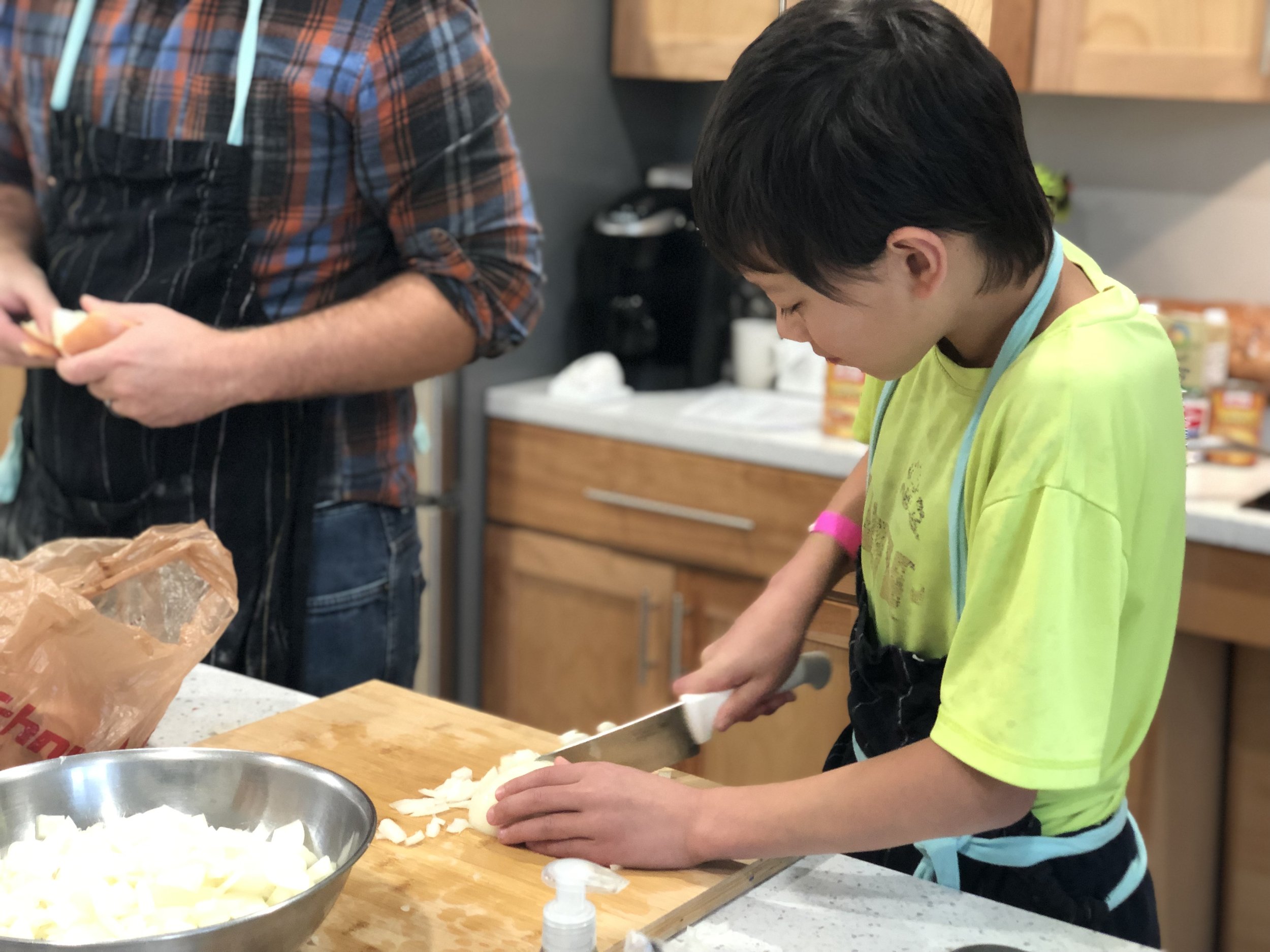
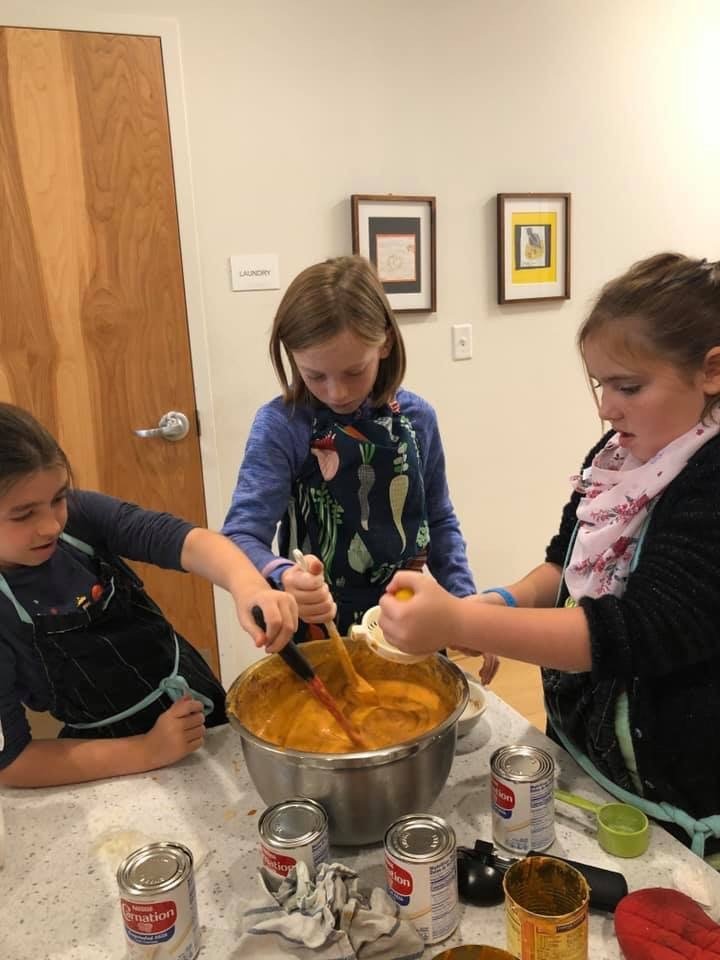
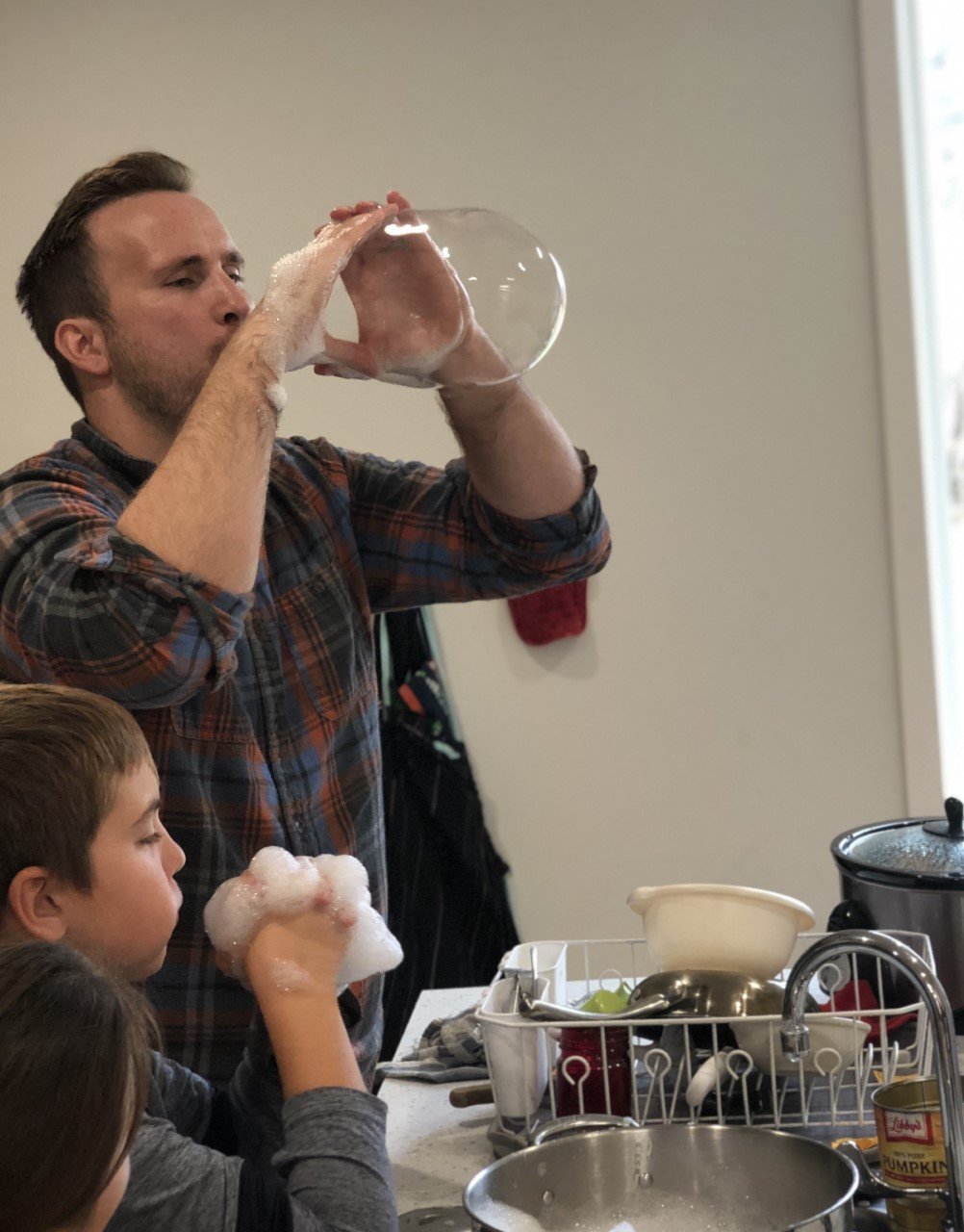 In the Great Room, the decoration committee was hard at work to make things beautiful and festive...
In the Great Room, the decoration committee was hard at work to make things beautiful and festive... 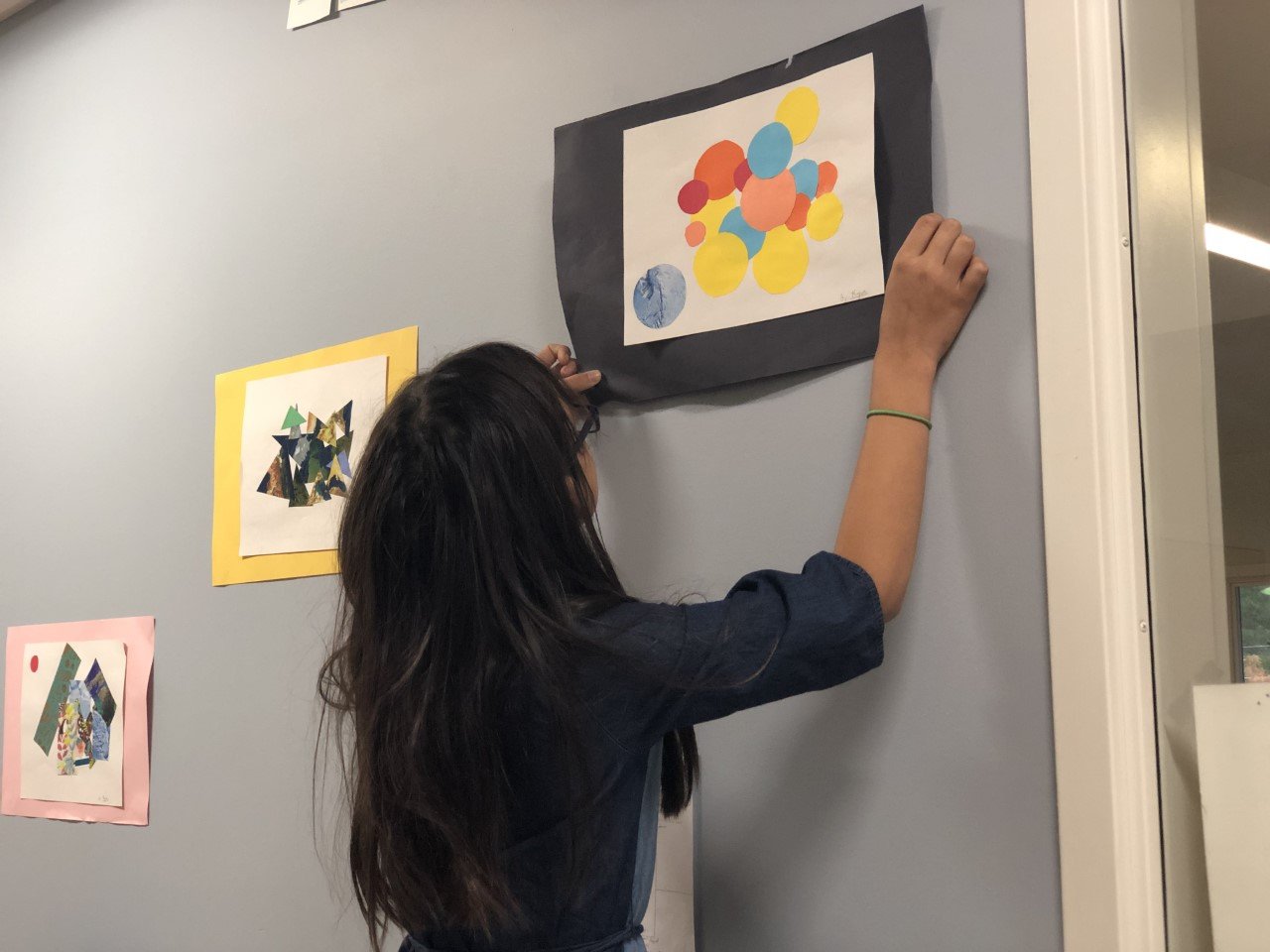
 while others waited patiently for the party to begin.
while others waited patiently for the party to begin. 
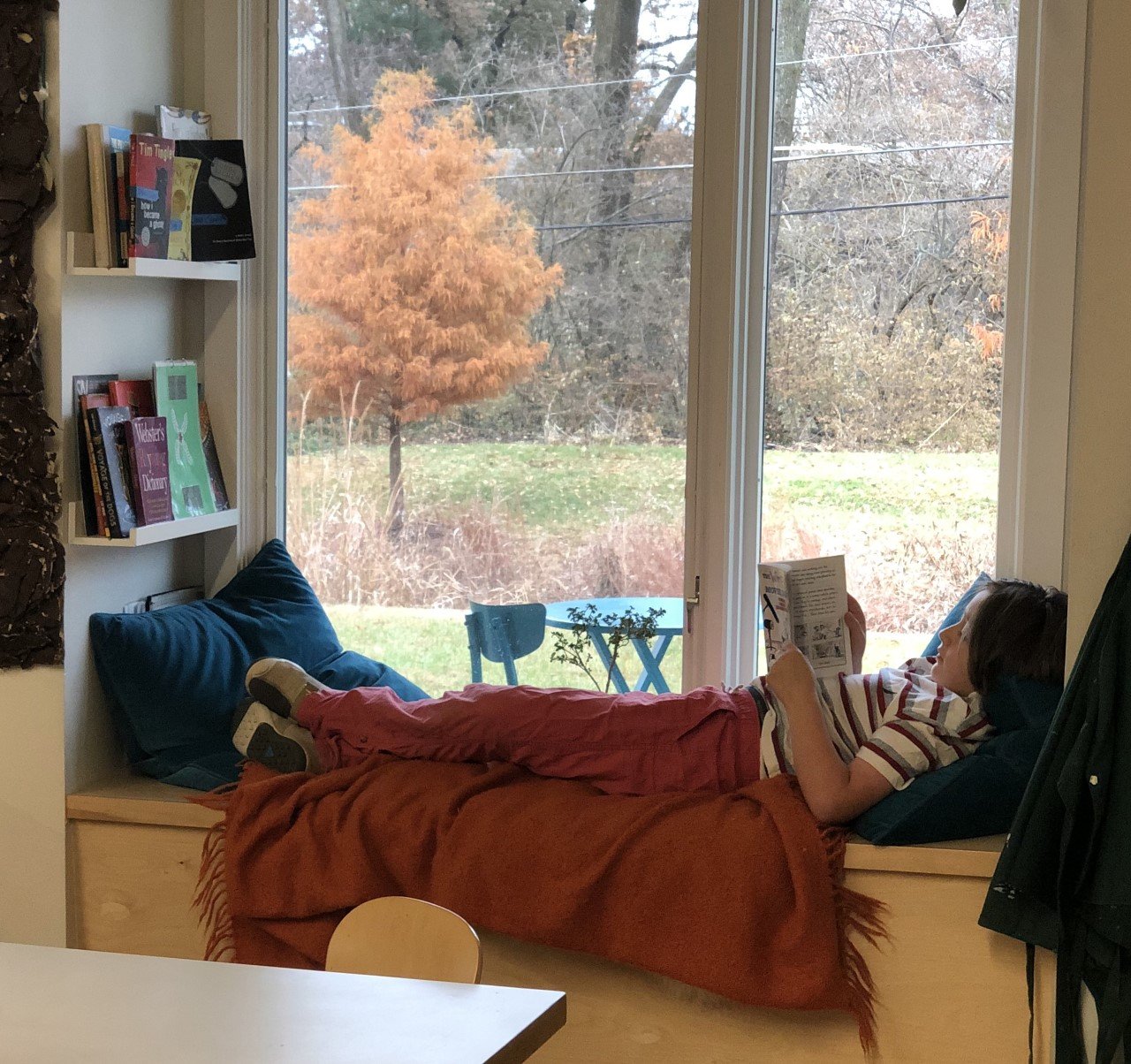 The chefs worked all morning...
The chefs worked all morning... 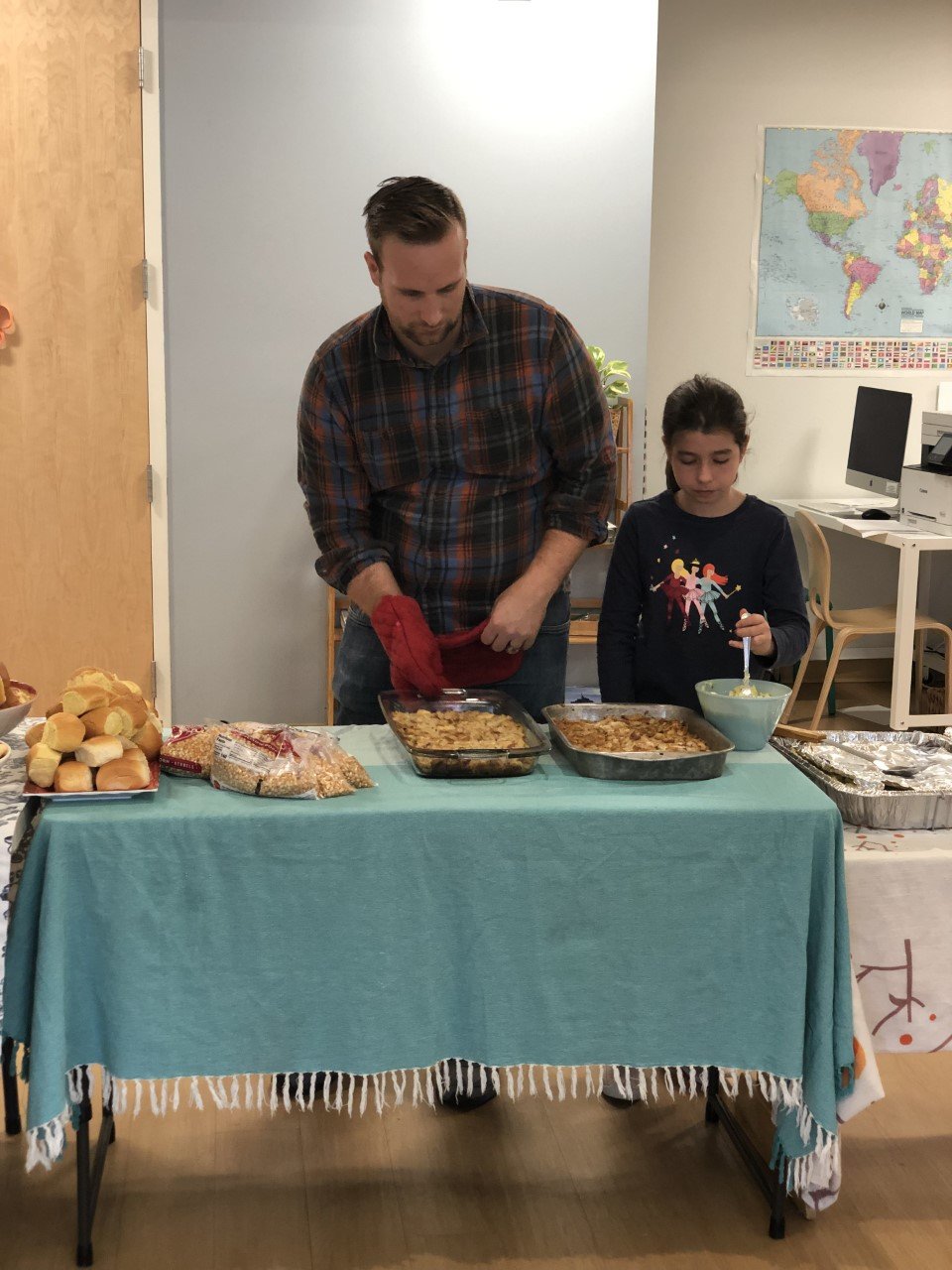
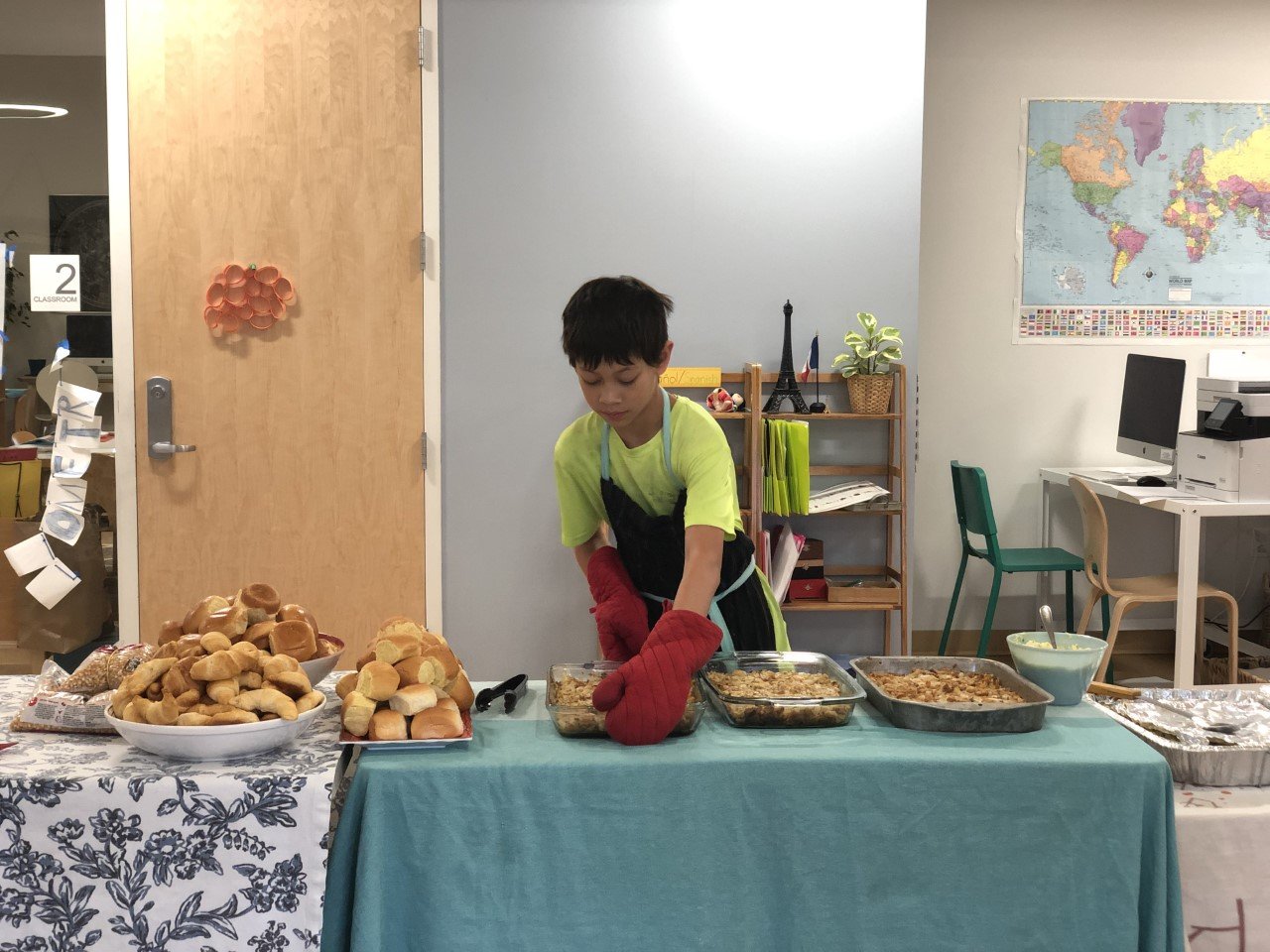
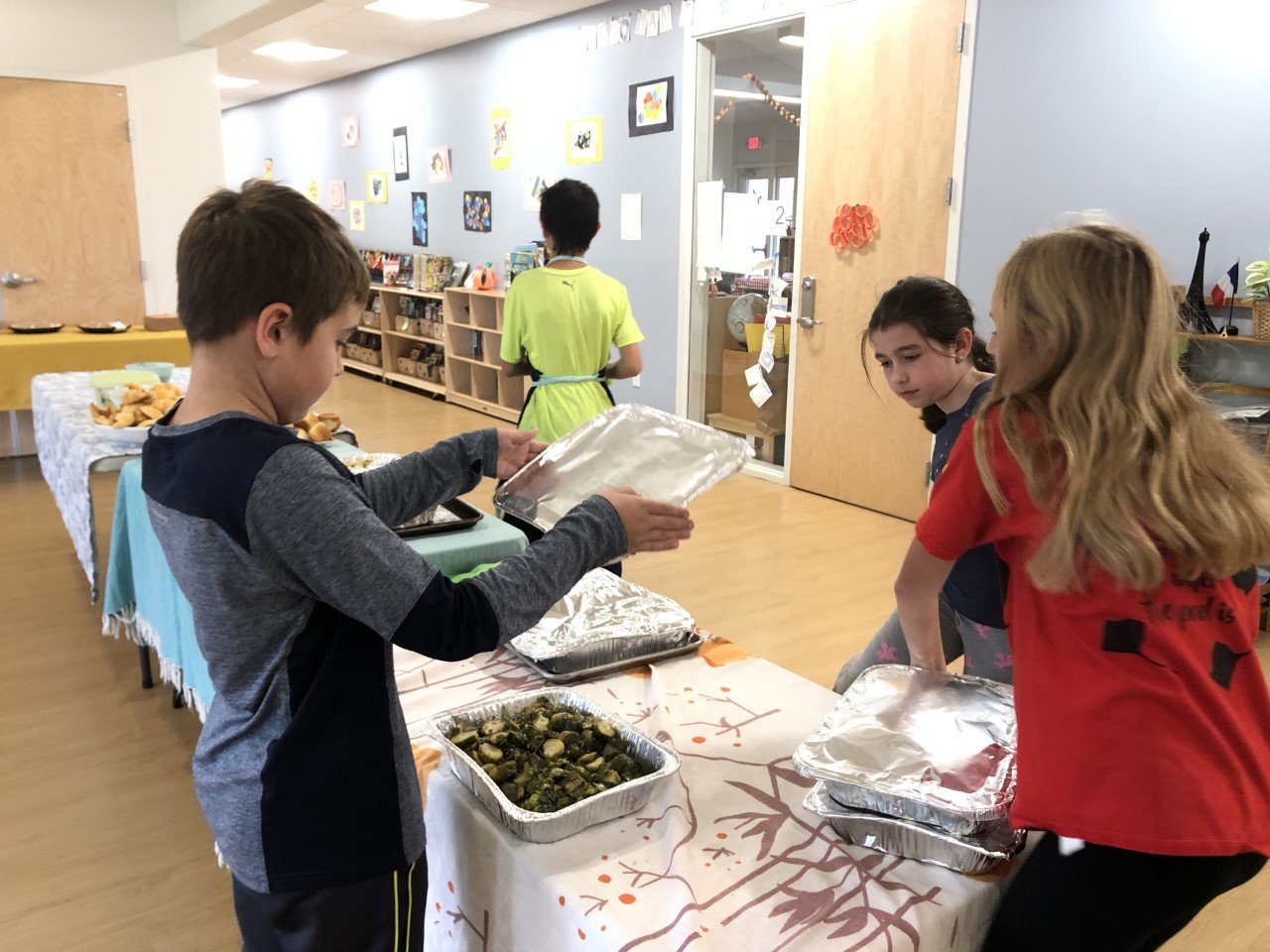 until it was finally time for the party! The recitation committee wrote and presented Thanksgiving poems, and the bands played original Thanksgiving songs.
until it was finally time for the party! The recitation committee wrote and presented Thanksgiving poems, and the bands played original Thanksgiving songs. 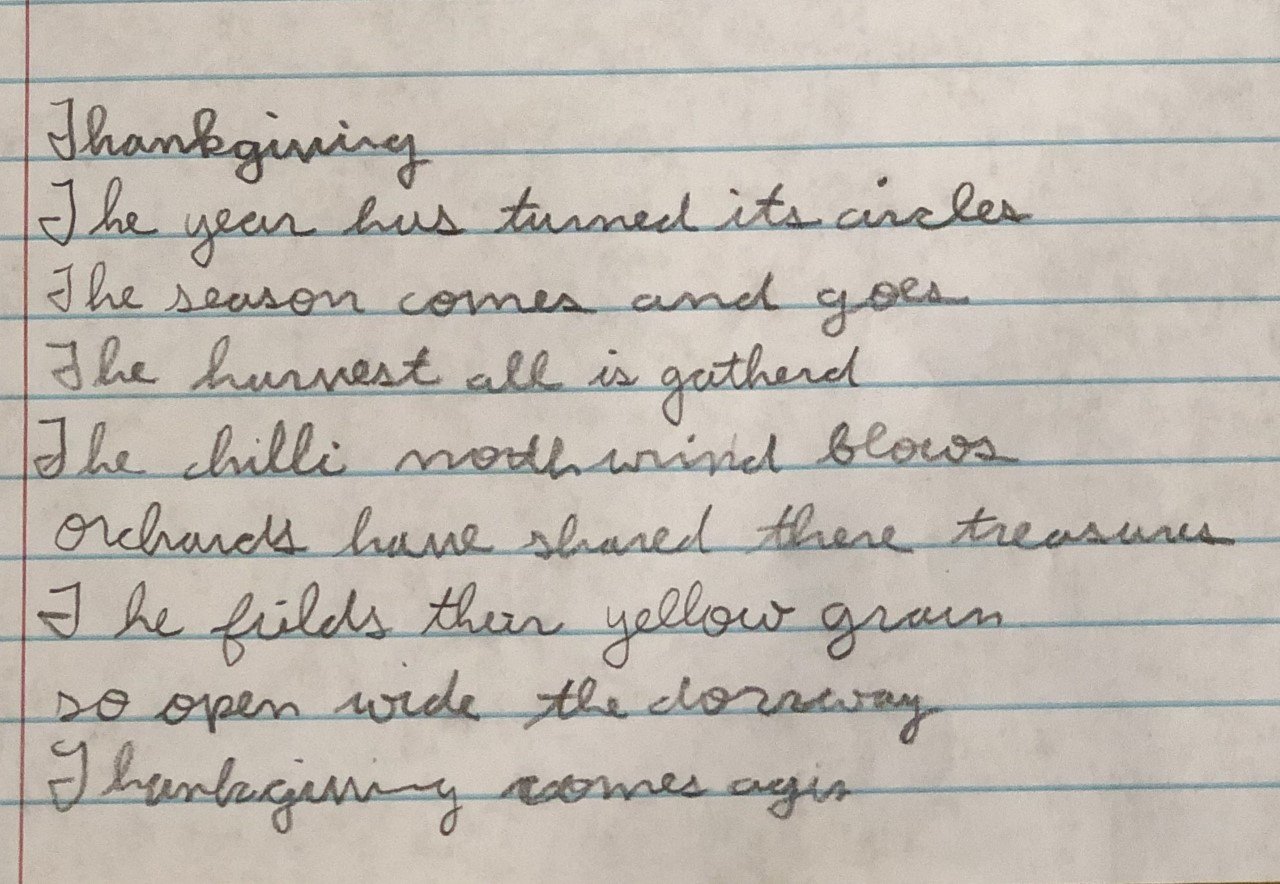
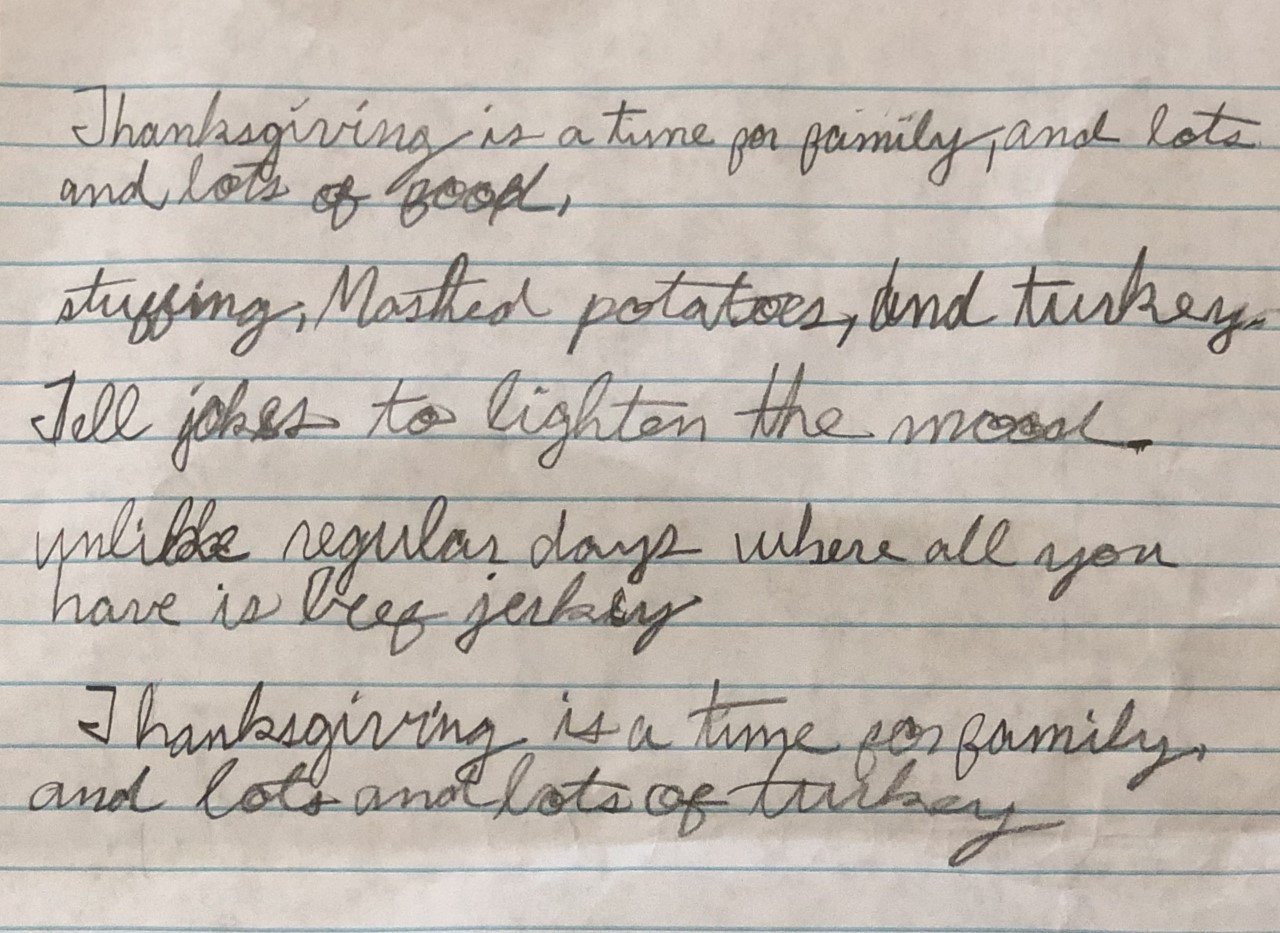
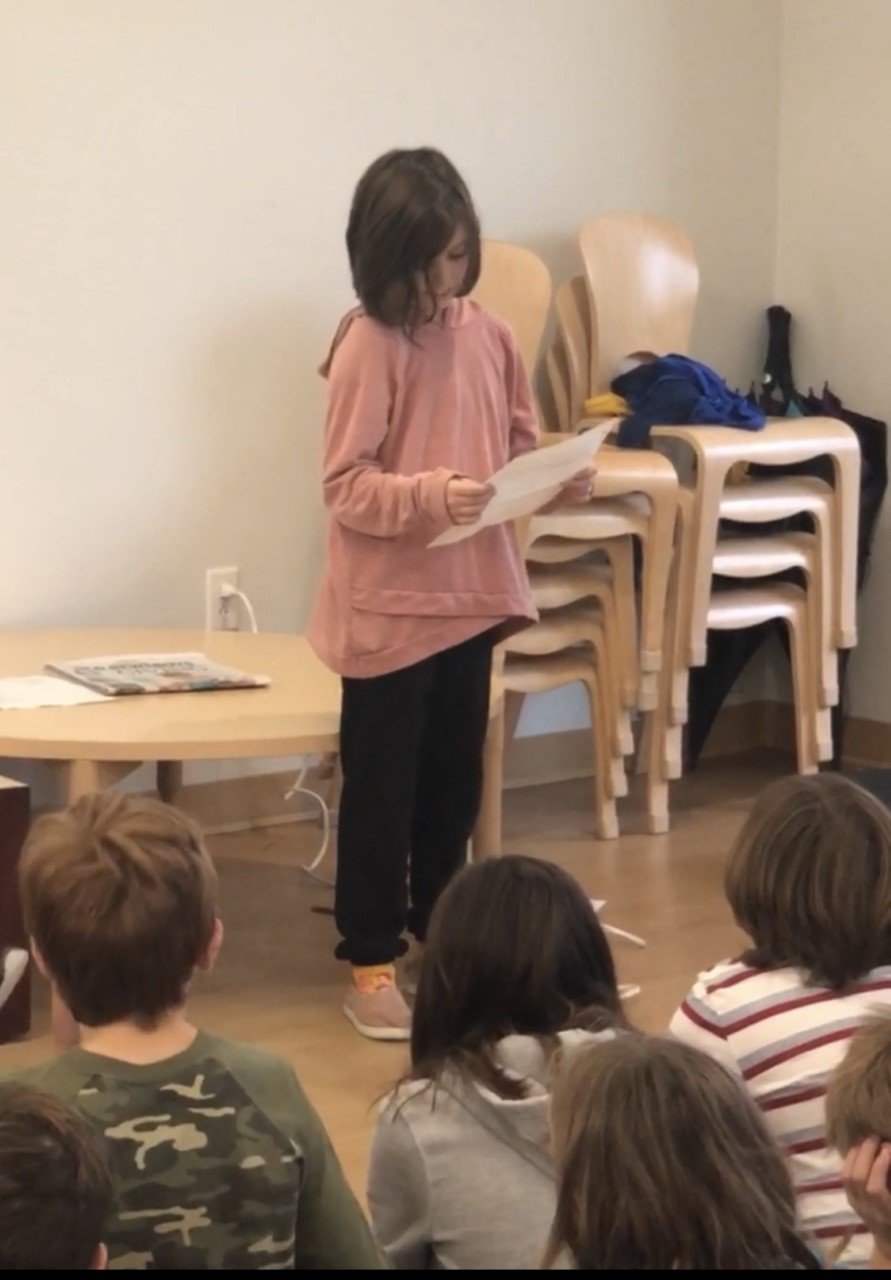
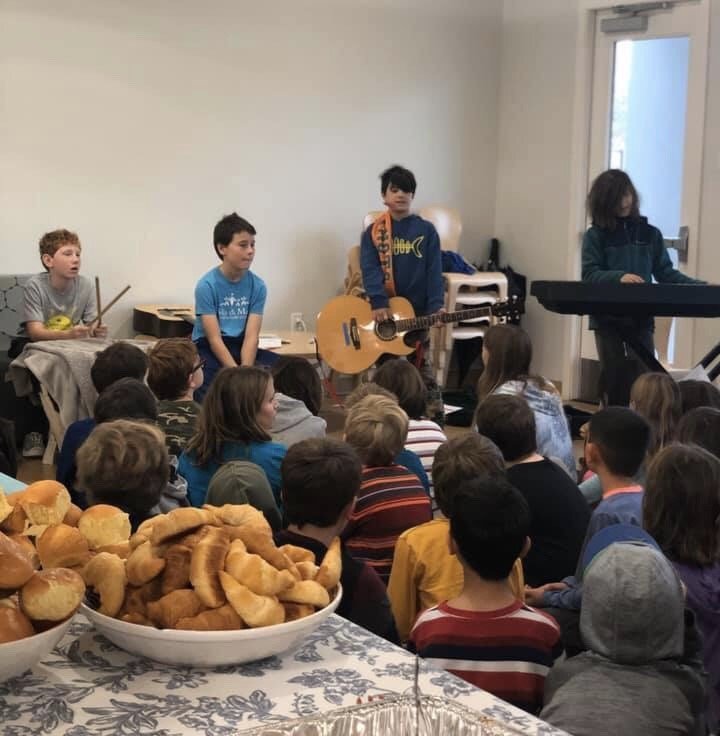 And then... the feast!
And then... the feast!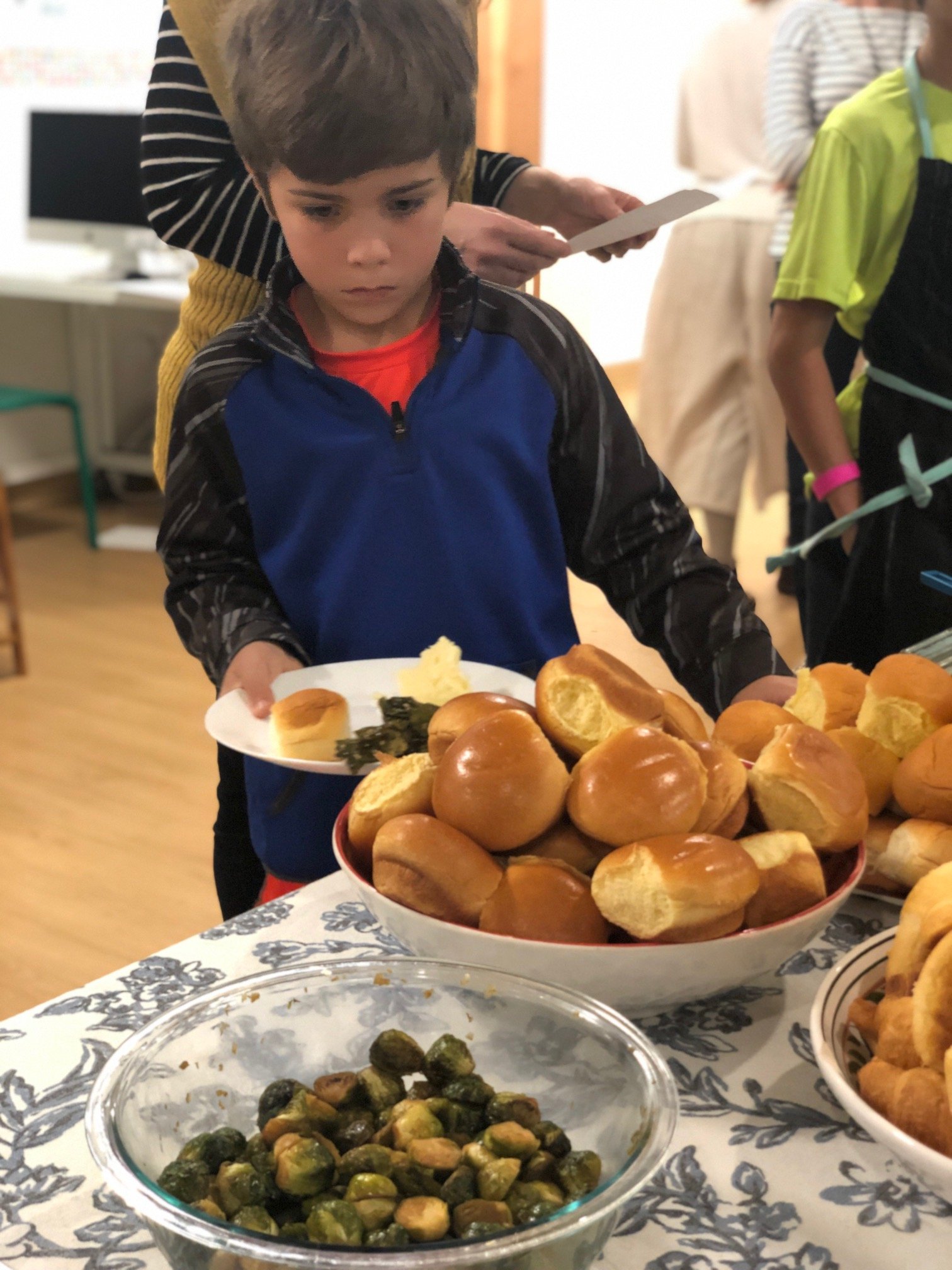
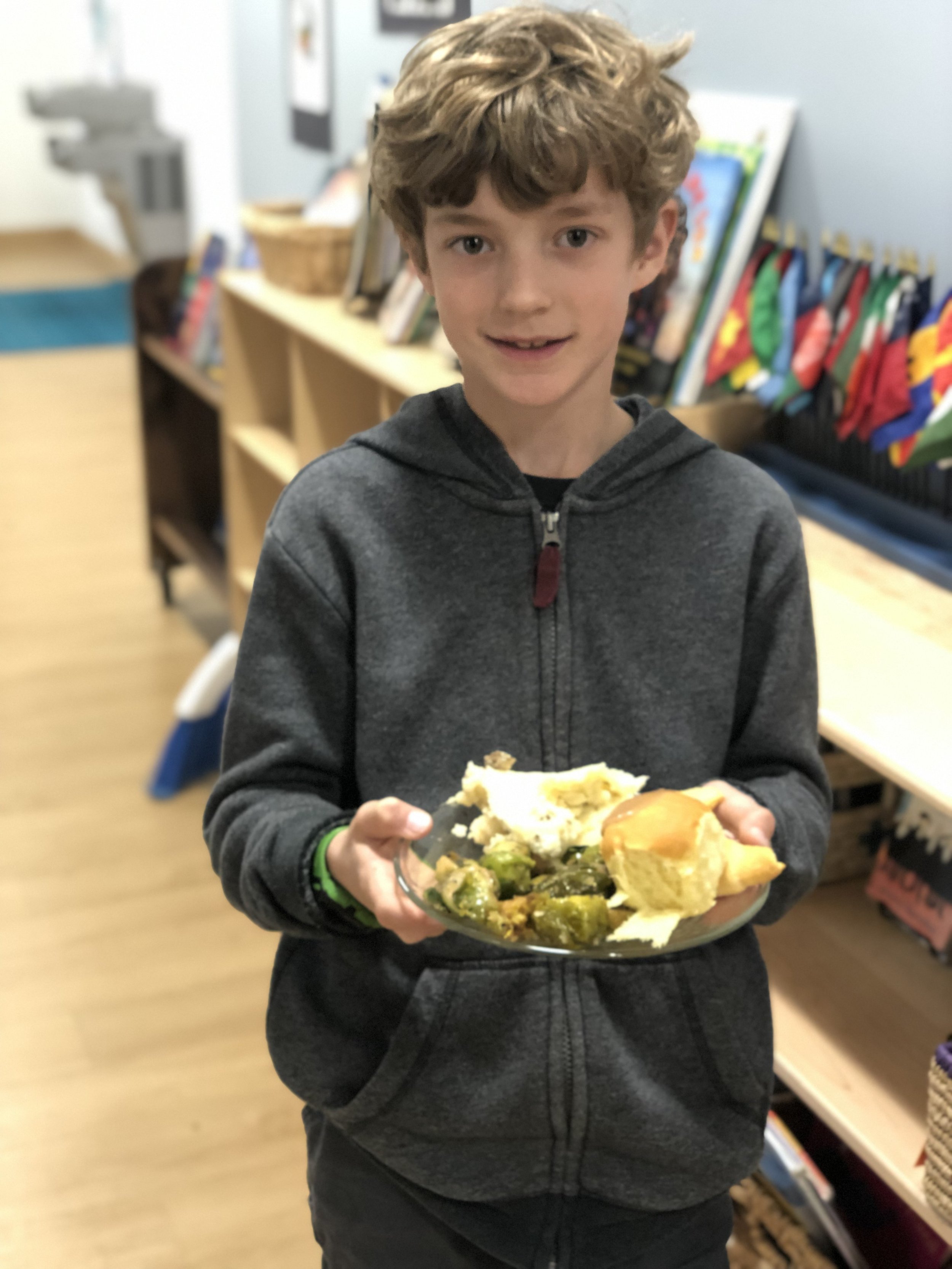
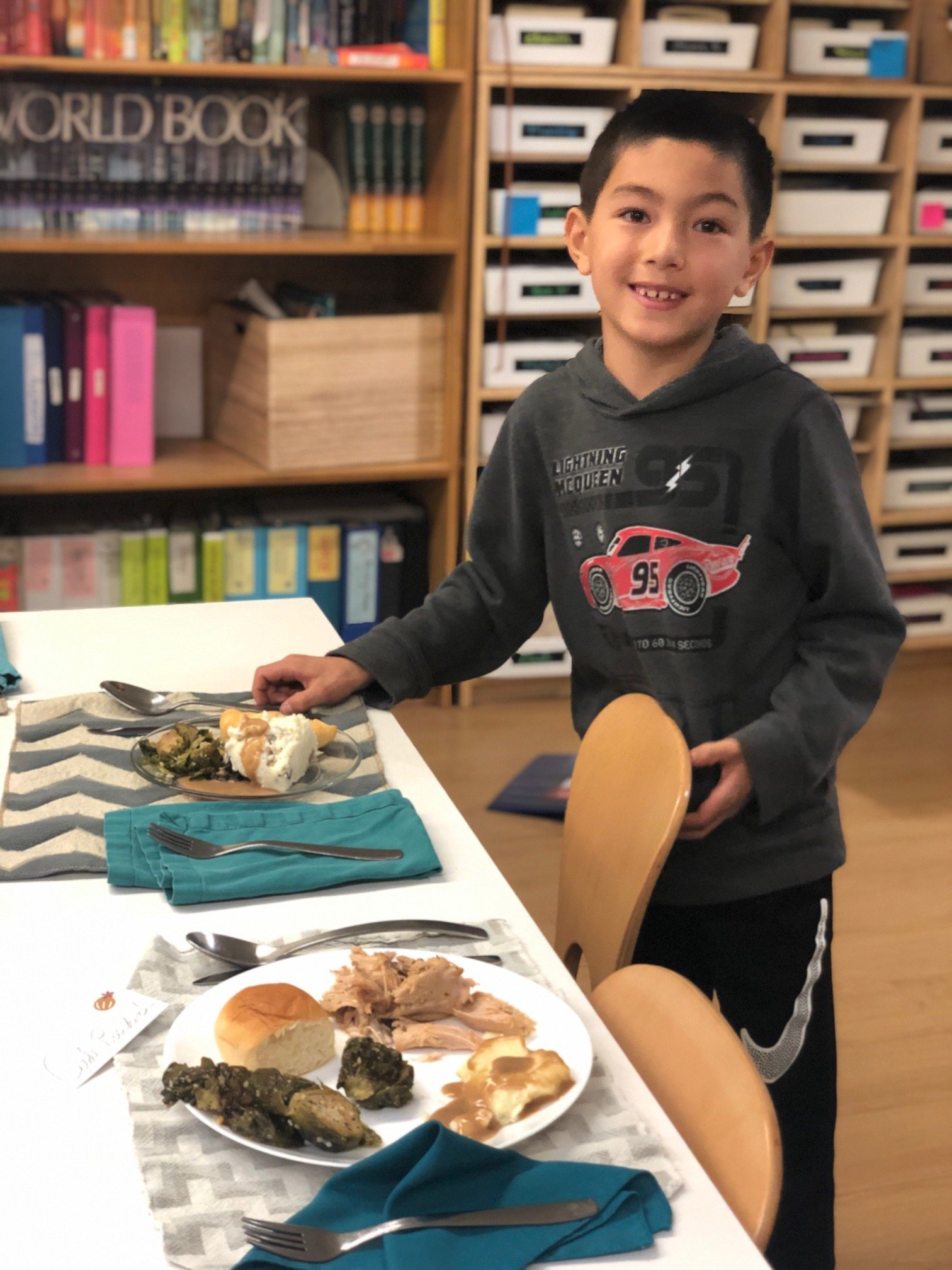 It was a wonderful day of great food and celebration for the VdM Elementary, and a great way to kick off the holiday season. From our family to yours, Happy Thanksgiving!
It was a wonderful day of great food and celebration for the VdM Elementary, and a great way to kick off the holiday season. From our family to yours, Happy Thanksgiving!
 On Saturday several Villa di Maria parents, faculty and staff members gathered for an immersive, hands-on workshop all about the work our children do each day. The participants explored the Children's House and Elementary environments, worked with the materials firsthand, and received lessons from our guides. Within the classrooms, the participants experienced the freedoms to move and to choose their own work—in other words, they experienced our school in the ways our children do.
On Saturday several Villa di Maria parents, faculty and staff members gathered for an immersive, hands-on workshop all about the work our children do each day. The participants explored the Children's House and Elementary environments, worked with the materials firsthand, and received lessons from our guides. Within the classrooms, the participants experienced the freedoms to move and to choose their own work—in other words, they experienced our school in the ways our children do.


 In Lower Elementary participants were joined by Guides Megan Eilers, Rebecca Callander and Katie Nelson to do the work of our first-, second- and third-year students.
In Lower Elementary participants were joined by Guides Megan Eilers, Rebecca Callander and Katie Nelson to do the work of our first-, second- and third-year students. 



 Megan, Rebecca and Katie moved with the group into Upper Elementary, to do the work of our fourth-, fifth- and sixth-year students.
Megan, Rebecca and Katie moved with the group into Upper Elementary, to do the work of our fourth-, fifth- and sixth-year students. 

 When the classroom work was done, everyone gathered to discuss their experiences. "What happens at this event," explains Robyn, "is that the work parents are doing in these environments reveals something about their own lives, about their own experiences as children in school. And it reveals something about their children's lives, their experiences here. They are understanding their children in a different way. It is an awesome opportunity."
When the classroom work was done, everyone gathered to discuss their experiences. "What happens at this event," explains Robyn, "is that the work parents are doing in these environments reveals something about their own lives, about their own experiences as children in school. And it reveals something about their children's lives, their experiences here. They are understanding their children in a different way. It is an awesome opportunity."
 Yesterday, our Children’s House extended day children took their first field trip of the year. Dressed in their most special concert-going attire, they headed to
Yesterday, our Children’s House extended day children took their first field trip of the year. Dressed in their most special concert-going attire, they headed to 


 The children heard ballads from Revolutionary America, Southern gospels, "cowboy songs" and 20th century folk music. And they did some other very exciting and important things: they explored their world by visiting one of St. Louis' cultural gems; they practiced grace and courtesy when they filed quietly through the doors of the concert hall and into their seats in the auditorium; they engaged their curiosity when new instruments and melodies were on the stage; they grew their vocabularies when they listened to the discussions. (And did I mention, they rode on a genuine yellow school bus?)
The children heard ballads from Revolutionary America, Southern gospels, "cowboy songs" and 20th century folk music. And they did some other very exciting and important things: they explored their world by visiting one of St. Louis' cultural gems; they practiced grace and courtesy when they filed quietly through the doors of the concert hall and into their seats in the auditorium; they engaged their curiosity when new instruments and melodies were on the stage; they grew their vocabularies when they listened to the discussions. (And did I mention, they rode on a genuine yellow school bus?) 




 As they move toward elementary, these children are starting to explore their roles in relation to the greater world. Big work, friends. High five!
As they move toward elementary, these children are starting to explore their roles in relation to the greater world. Big work, friends. High five! 
 Chickadee, written and illustrated by Louise Erdrich, is the fourth book in the Birchbark House series, which follows the stories of an Ojibwe family through a hundred years in the Northern Midwestern United States and Canada. In this book, we meet Chickadee and Makoons, eight-year-old identical twins whose lives are full of fun and happiness until Chickadee is stolen from his home and family to work as a servant for his white kidnappers. Chickadee escapes and he and his family face dangerous journeys across Minnesota to find each other. Chickadee is guided by the spirit of the bird that is his namesake—small and mischievous, powerful and brave. This is a beautiful story, full of adventure, sorrow, courage, tradition, joy and humor.
Chickadee, written and illustrated by Louise Erdrich, is the fourth book in the Birchbark House series, which follows the stories of an Ojibwe family through a hundred years in the Northern Midwestern United States and Canada. In this book, we meet Chickadee and Makoons, eight-year-old identical twins whose lives are full of fun and happiness until Chickadee is stolen from his home and family to work as a servant for his white kidnappers. Chickadee escapes and he and his family face dangerous journeys across Minnesota to find each other. Chickadee is guided by the spirit of the bird that is his namesake—small and mischievous, powerful and brave. This is a beautiful story, full of adventure, sorrow, courage, tradition, joy and humor.  Code Talker: A Novel About the Navajo Marines of World War Two by Joseph Bruchac. This is the story of 16-year-old Ned Begay, a fictional character who represents the Navajo men and boys who worked for the U.S. military in World War II, during a time when Navajo children were routinely taken from their homes and sent to boarding schools where they were made to unlearn their language and culture. Many Navajo boys were secretly recruited from these schools precisely for the language they were being trained to forget. They used their native language to communicate on behalf of the U.S. military during the Pacific Theater. Navajo, indecipherable by the Japanese, was the "code" that helped saved many lives in the war. How I Bec
Code Talker: A Novel About the Navajo Marines of World War Two by Joseph Bruchac. This is the story of 16-year-old Ned Begay, a fictional character who represents the Navajo men and boys who worked for the U.S. military in World War II, during a time when Navajo children were routinely taken from their homes and sent to boarding schools where they were made to unlearn their language and culture. Many Navajo boys were secretly recruited from these schools precisely for the language they were being trained to forget. They used their native language to communicate on behalf of the U.S. military during the Pacific Theater. Navajo, indecipherable by the Japanese, was the "code" that helped saved many lives in the war. How I Bec ame a Ghost by Tim Tingle is the story of ten-year-old Isaac, a Choctow boy whose family is forced by the U.S. military to leave their home in Mississippi on the Trail of Tears. Isaac, like so many others, dies on the harrowing journey to find a new home. The story is told from Isaac's point of view, after his death. As a ghost, Isaac finds community among other ghosts and living elders who are able to communicate with him. With their help—and the help of Joseph, the panther boy and Jumper, a Choctow-speaking dog—Isaac works to rescue Naomi, a Choctow girl who has been taken prisoner by white soldiers. How I Became a Ghost is inspiring, rich with tradition and full of suspense.
ame a Ghost by Tim Tingle is the story of ten-year-old Isaac, a Choctow boy whose family is forced by the U.S. military to leave their home in Mississippi on the Trail of Tears. Isaac, like so many others, dies on the harrowing journey to find a new home. The story is told from Isaac's point of view, after his death. As a ghost, Isaac finds community among other ghosts and living elders who are able to communicate with him. With their help—and the help of Joseph, the panther boy and Jumper, a Choctow-speaking dog—Isaac works to rescue Naomi, a Choctow girl who has been taken prisoner by white soldiers. How I Became a Ghost is inspiring, rich with tradition and full of suspense.  In the Footsteps of Crazy Horse by Joseph Marshall, III tells the story of an eleven-year-old Lakota boy, Jimmy McClean and his maternal grandfather, Nyles High Eagle. Jimmy is bullied on his reservation because he inherited his last name, as well as his light skin and blue eyes, from his white paternal grandfather. To help Jimmy find confidence, Nyles takes him on an adventure, following the footsteps of the great Lakota leader, Crazy Horse, who defended Lakota territories against the U.S. federal government. As they travel through South Dakota, Nyles tells Jimmy (and the reader) stories about the life of Crazy Horse and inspires Jimmy to find pride in himself and his true Lakota heritage. A Str
In the Footsteps of Crazy Horse by Joseph Marshall, III tells the story of an eleven-year-old Lakota boy, Jimmy McClean and his maternal grandfather, Nyles High Eagle. Jimmy is bullied on his reservation because he inherited his last name, as well as his light skin and blue eyes, from his white paternal grandfather. To help Jimmy find confidence, Nyles takes him on an adventure, following the footsteps of the great Lakota leader, Crazy Horse, who defended Lakota territories against the U.S. federal government. As they travel through South Dakota, Nyles tells Jimmy (and the reader) stories about the life of Crazy Horse and inspires Jimmy to find pride in himself and his true Lakota heritage. A Str anger at Home: A True Story, written by Christy Jordan-Fenton and Margaret Pokiak-Fenton and illustrated by Liz Amini-Holmes. This is the sequel to Pokiak-Fenton's first memoir, Fatty Legs. This book tells the true, heartbreaking story of ten-year-old Olemaun (Margaret) Pokiak's return to her Inuit family in the arctic after two years of living in a residential school in Canada, where she was forced to take a new name, practice a different religion and lose her native language. When she returns home, Margaret's family does not recognize her and Margaret discovers that she no longer knows how to live with them. She struggles to relearn everything and to find her sense of self and belonging. Recommended children's books by Native American authors:First Nations Development Institute's
anger at Home: A True Story, written by Christy Jordan-Fenton and Margaret Pokiak-Fenton and illustrated by Liz Amini-Holmes. This is the sequel to Pokiak-Fenton's first memoir, Fatty Legs. This book tells the true, heartbreaking story of ten-year-old Olemaun (Margaret) Pokiak's return to her Inuit family in the arctic after two years of living in a residential school in Canada, where she was forced to take a new name, practice a different religion and lose her native language. When she returns home, Margaret's family does not recognize her and Margaret discovers that she no longer knows how to live with them. She struggles to relearn everything and to find her sense of self and belonging. Recommended children's books by Native American authors:First Nations Development Institute's 
 One of my favorite things about Villa di Maria is our commitment to nurturing a culture of reading. Language lessons, reading corners, libraries and read-alouds are in every classroom. Children are welcome to read alone, in groups or to each other. For those who struggle to find ease with reading, our reading specialist,
One of my favorite things about Villa di Maria is our commitment to nurturing a culture of reading. Language lessons, reading corners, libraries and read-alouds are in every classroom. Children are welcome to read alone, in groups or to each other. For those who struggle to find ease with reading, our reading specialist, 

 And by the time our students reach Upper Elementary, they are introduced to a new way to revel in reading—the Book Club! Facilitated by Ms. Colleen, the Upper Elementary Book Club is a monthly deep-dive into curated selections of books in a range of genres. Students work at school and at home to complete the books by a deadline, along with complementary work, including story maps and reflective summaries, to help them organize their thoughts and plan for discussion. Then they gather to discuss themes, settings, characters, plot lines and literary devices (and share delicious snacks!).Empathy, diversity of perspective, language skills, time management, positive attitudes about reading, vocabulary, improved writing, new knowledge, reflection, critical thinking, self-evaluation… my ode to the benefits of the book club could go on and on. I'll sum it up with a quote from a fifth-year Upper Elementary student: "I think Book Club is important because other schools have it and because it is good to get used to due dates, homework and reading a lot of books. Also to expand your knowledge and English. I like reading the books. I think the papers are ok. And it helps you prepare for life."
And by the time our students reach Upper Elementary, they are introduced to a new way to revel in reading—the Book Club! Facilitated by Ms. Colleen, the Upper Elementary Book Club is a monthly deep-dive into curated selections of books in a range of genres. Students work at school and at home to complete the books by a deadline, along with complementary work, including story maps and reflective summaries, to help them organize their thoughts and plan for discussion. Then they gather to discuss themes, settings, characters, plot lines and literary devices (and share delicious snacks!).Empathy, diversity of perspective, language skills, time management, positive attitudes about reading, vocabulary, improved writing, new knowledge, reflection, critical thinking, self-evaluation… my ode to the benefits of the book club could go on and on. I'll sum it up with a quote from a fifth-year Upper Elementary student: "I think Book Club is important because other schools have it and because it is good to get used to due dates, homework and reading a lot of books. Also to expand your knowledge and English. I like reading the books. I think the papers are ok. And it helps you prepare for life."
 This month, UE students are reading books by Native American authors. The stories describe events in the history of North America from the perspectives of Native American children. We'll take a look at those books, as well as a few other resources for finding Native American voices, tomorrow. Stay tuned!
This month, UE students are reading books by Native American authors. The stories describe events in the history of North America from the perspectives of Native American children. We'll take a look at those books, as well as a few other resources for finding Native American voices, tomorrow. Stay tuned! 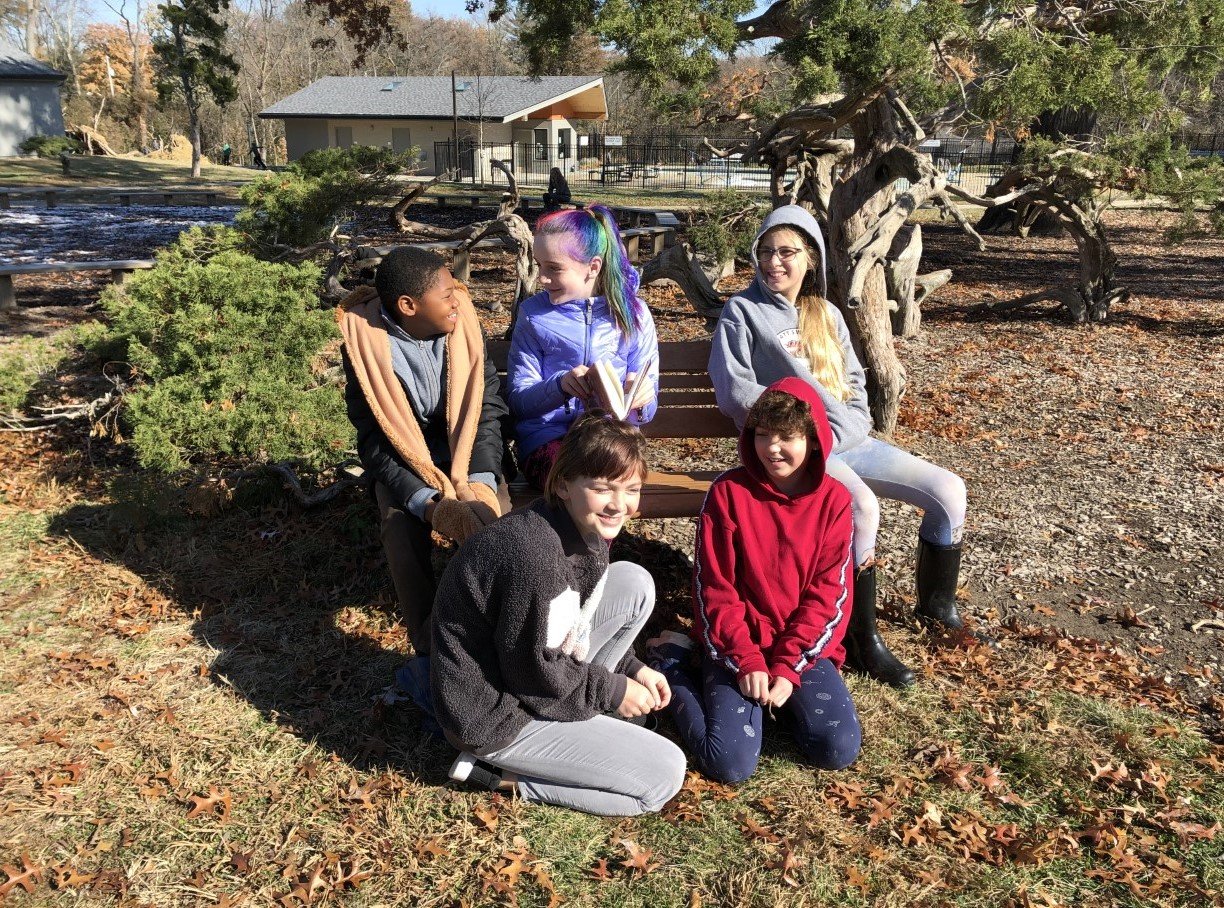 Happy November! The VdM blog has been on a little hiatus, but we are back and ready to talk about all the wonderful things happening in the VdM community. My name is Hilary Lord, and most of you know me as the registrar and business manager. I am also a long-time VdM parent, a former Montessori child and have worked as a writer and editor. Most importantly, I love Villa di Maria—we all do!—and I am excited to share more of it with you.While the blog was resting these past couple of months, VdM has been going strong! We’ve been busy with lessons, songs, dish days and hot lunches, Open House, MMUN preparations, the Boo Fest redo, Halloween parties and historical figure reports, parent-guide conferences, several goings out in the elementary, a few birthday celebrations and a couple of campouts.If you ask the children, I’d imagine they’d say their favorite new thing of 2019-2020 is the playground—and it is pretty great! But I’d say the best part of 2019-2020 so far is the people. This school year, we’ve welcomed 19 new families and 16 new siblings of current families into our community.Our campus is alive with the enthusiasm and joy these children bring each and every day. From the Detective Adjective Game and caring for the classroom pets to mastering all nine grammar boxes and growing new friendships, the work our children do on this campus is big and important. It is an honor to witness it and to share it with you. Stay tuned—there’s so much great stuff to come!
Happy November! The VdM blog has been on a little hiatus, but we are back and ready to talk about all the wonderful things happening in the VdM community. My name is Hilary Lord, and most of you know me as the registrar and business manager. I am also a long-time VdM parent, a former Montessori child and have worked as a writer and editor. Most importantly, I love Villa di Maria—we all do!—and I am excited to share more of it with you.While the blog was resting these past couple of months, VdM has been going strong! We’ve been busy with lessons, songs, dish days and hot lunches, Open House, MMUN preparations, the Boo Fest redo, Halloween parties and historical figure reports, parent-guide conferences, several goings out in the elementary, a few birthday celebrations and a couple of campouts.If you ask the children, I’d imagine they’d say their favorite new thing of 2019-2020 is the playground—and it is pretty great! But I’d say the best part of 2019-2020 so far is the people. This school year, we’ve welcomed 19 new families and 16 new siblings of current families into our community.Our campus is alive with the enthusiasm and joy these children bring each and every day. From the Detective Adjective Game and caring for the classroom pets to mastering all nine grammar boxes and growing new friendships, the work our children do on this campus is big and important. It is an honor to witness it and to share it with you. Stay tuned—there’s so much great stuff to come! Happy Summer! When I dream of summer, I think of a less hectic lifestyle, enjoying a book under a tree, and sleeping in a bit later each day. If your family is similar to my family, we savor each day of summer break. I am a realist however and also understand that summer also leads to more distractions and screen time, quite a few arguments with my children, and I also worry about the “summer slide” in my children’s academic progress.Following are a few tips that help me as a parent as I attempt to combat academic loss in the area of literacy that can happen over the summer.1) Make reading enjoyable and part of your everyday routine. Days turn into weeks, and weeks turn into months. To not let time slip away, make reading something you do 15 minutes every day. 15 minutes of reading a day is a magical number according to the latest studies.2) LISTEN to books! Listening to literature is one of the TOP ways to increase overall literacy skills for ALL age levels. Increased reading levels, fluency, comprehension, visualization, and vocabulary ALL increase with listening to books. If you can’t fit in the 15 minutes of reading regularly, this is a super substitution. No, you don’t have to follow along with the book to reap the benefits. You can get audiobooks from the library, there are many online sources, and Audible.com has a few free titles. If audiobooks are new to you, give it a try! It takes at least 30 minutes of listening to get accustomed. Start with fun, short texts.
Happy Summer! When I dream of summer, I think of a less hectic lifestyle, enjoying a book under a tree, and sleeping in a bit later each day. If your family is similar to my family, we savor each day of summer break. I am a realist however and also understand that summer also leads to more distractions and screen time, quite a few arguments with my children, and I also worry about the “summer slide” in my children’s academic progress.Following are a few tips that help me as a parent as I attempt to combat academic loss in the area of literacy that can happen over the summer.1) Make reading enjoyable and part of your everyday routine. Days turn into weeks, and weeks turn into months. To not let time slip away, make reading something you do 15 minutes every day. 15 minutes of reading a day is a magical number according to the latest studies.2) LISTEN to books! Listening to literature is one of the TOP ways to increase overall literacy skills for ALL age levels. Increased reading levels, fluency, comprehension, visualization, and vocabulary ALL increase with listening to books. If you can’t fit in the 15 minutes of reading regularly, this is a super substitution. No, you don’t have to follow along with the book to reap the benefits. You can get audiobooks from the library, there are many online sources, and Audible.com has a few free titles. If audiobooks are new to you, give it a try! It takes at least 30 minutes of listening to get accustomed. Start with fun, short texts. • One of my favorites for toddlers is The Frogs Wore Red Suspenders by Jack Prelutsky.
• One of my favorites for toddlers is The Frogs Wore Red Suspenders by Jack Prelutsky. • For early elementary school children, My Father’s Dragon by Ruth Stiles Gannett was a home run for all three of my children. The Henry Huggins and Ramona Quimby series are also good places to start.
• For early elementary school children, My Father’s Dragon by Ruth Stiles Gannett was a home run for all three of my children. The Henry Huggins and Ramona Quimby series are also good places to start. • For upper elementary children, the lists are endless! Find a genre your child enjoys. Is there a series your child would like to read but the books are too long? This could be a great place to start.4) Keep the working memory active over the summer months. Reading requires A LOT of working memory skills. A reader must tie sight words, phonetic skills, language structure, and visualization together. Learning chess is one of the most trusted ways of improving the working memory! If you haven’t checked out the
• For upper elementary children, the lists are endless! Find a genre your child enjoys. Is there a series your child would like to read but the books are too long? This could be a great place to start.4) Keep the working memory active over the summer months. Reading requires A LOT of working memory skills. A reader must tie sight words, phonetic skills, language structure, and visualization together. Learning chess is one of the most trusted ways of improving the working memory! If you haven’t checked out the 
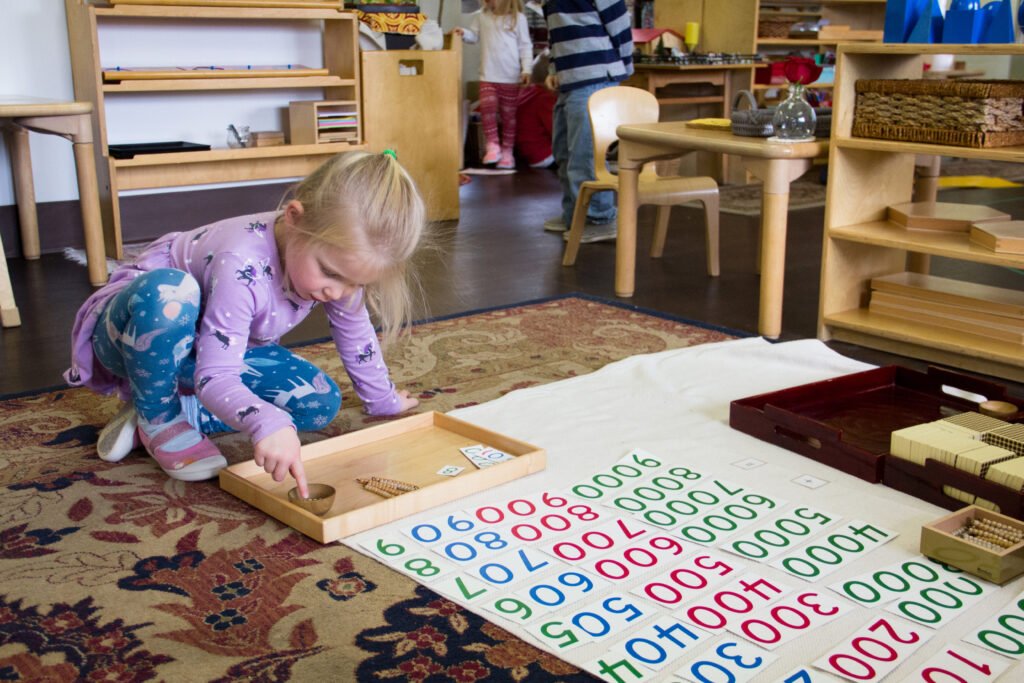
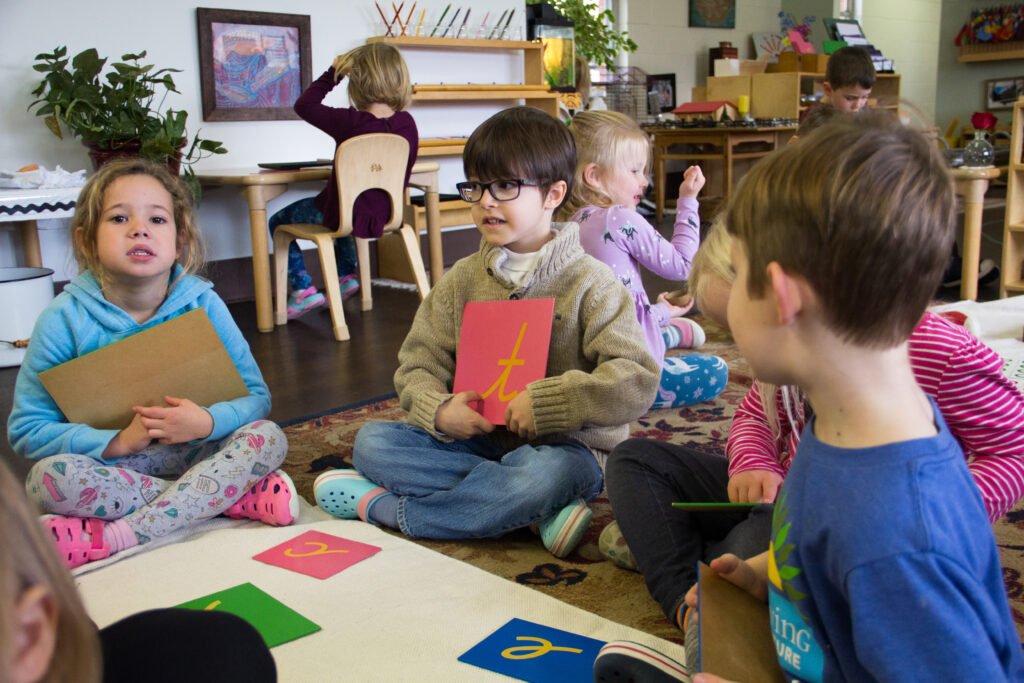
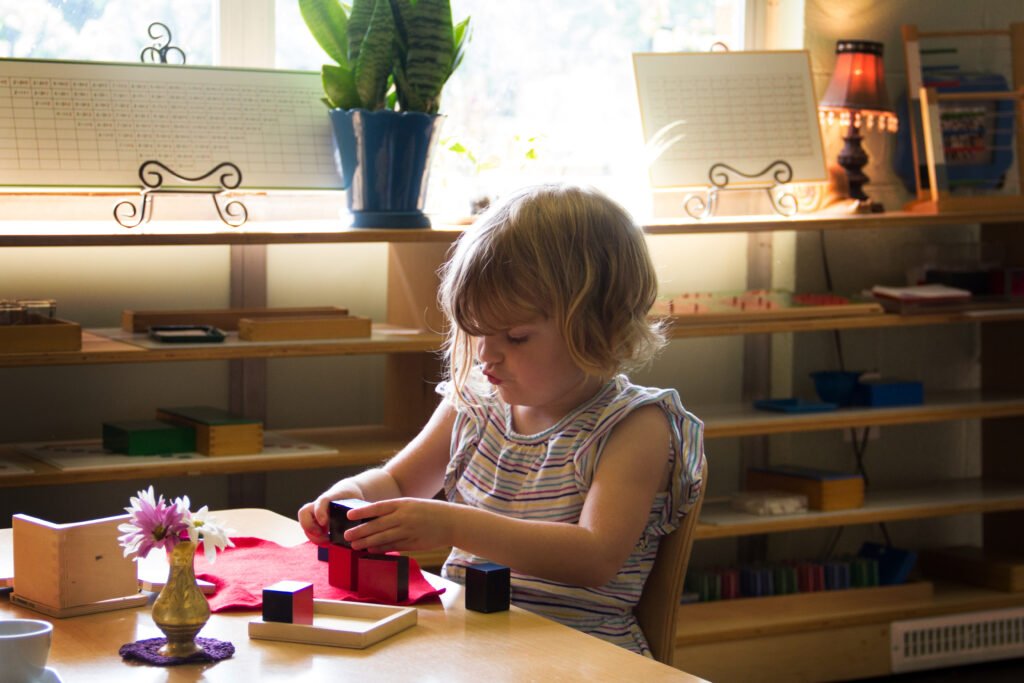
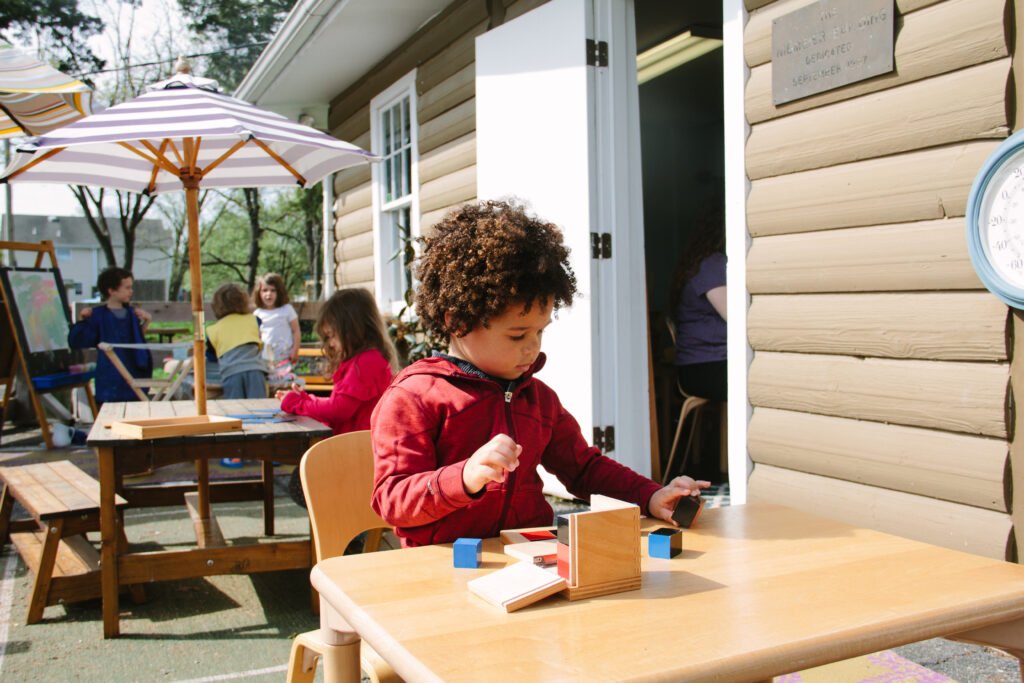
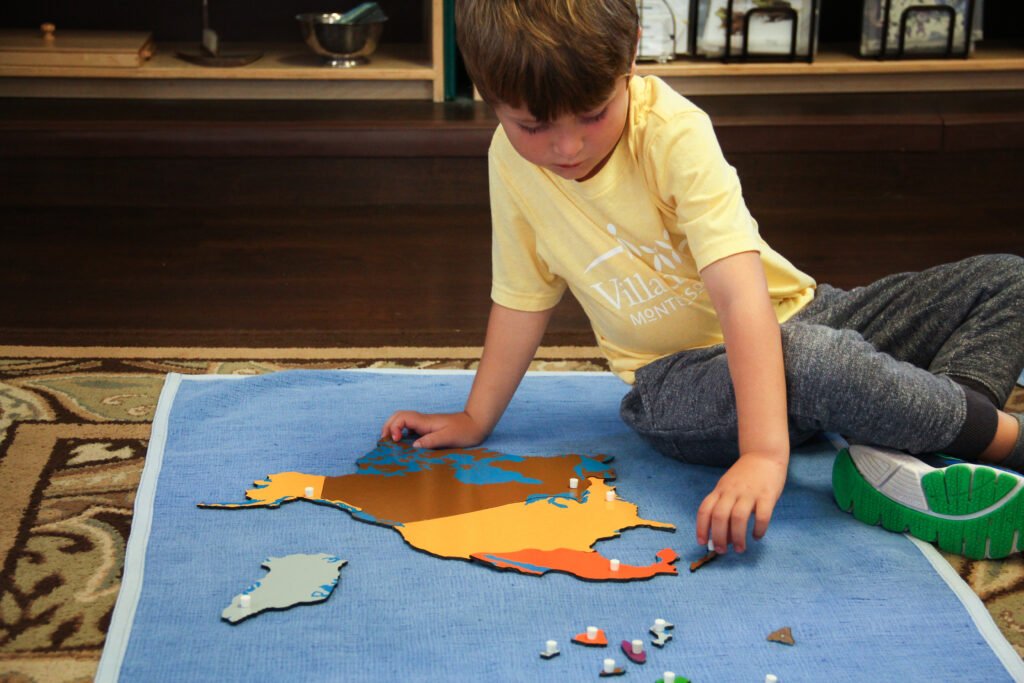
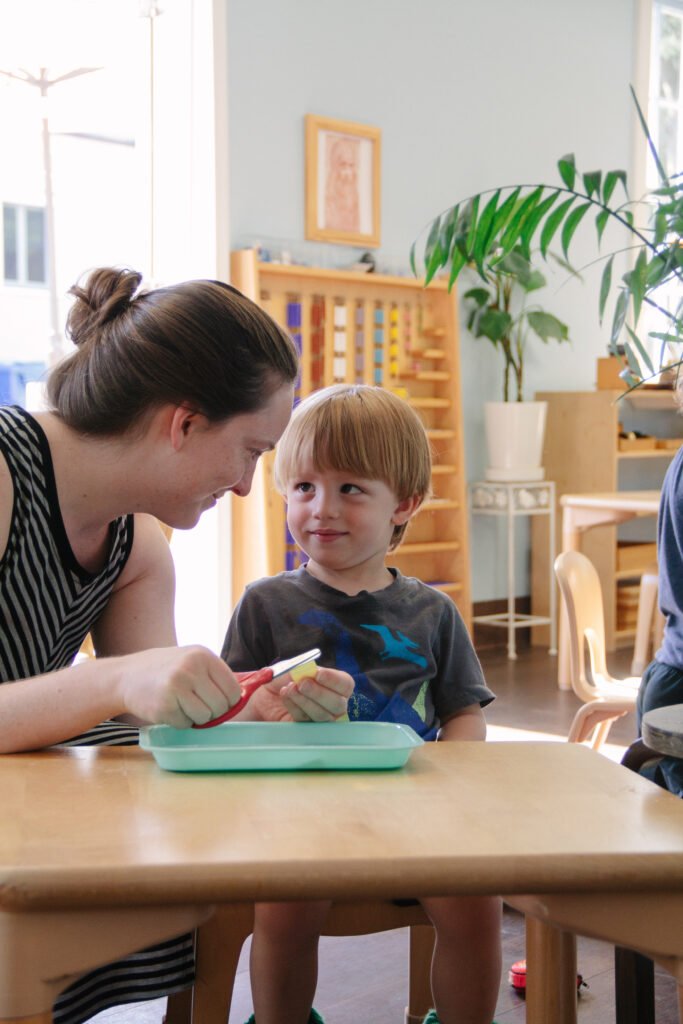
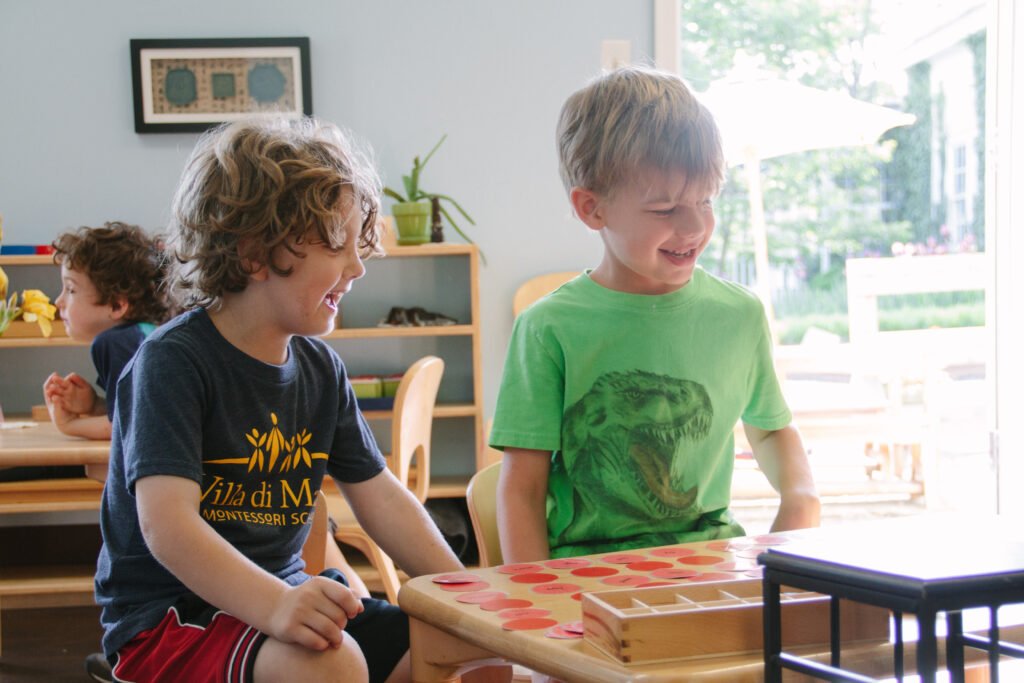
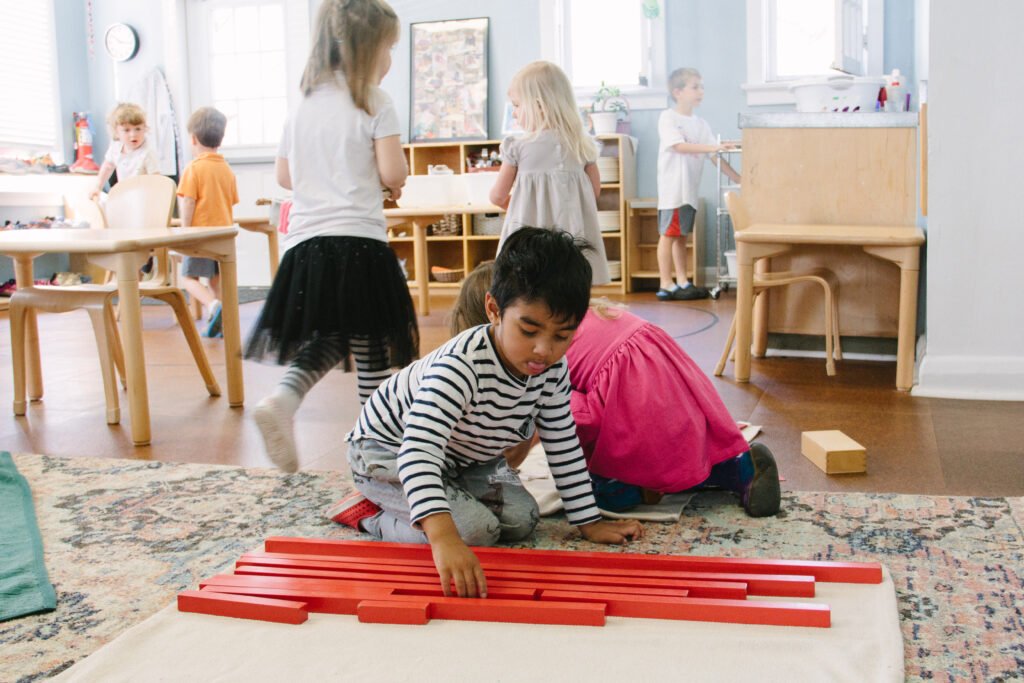
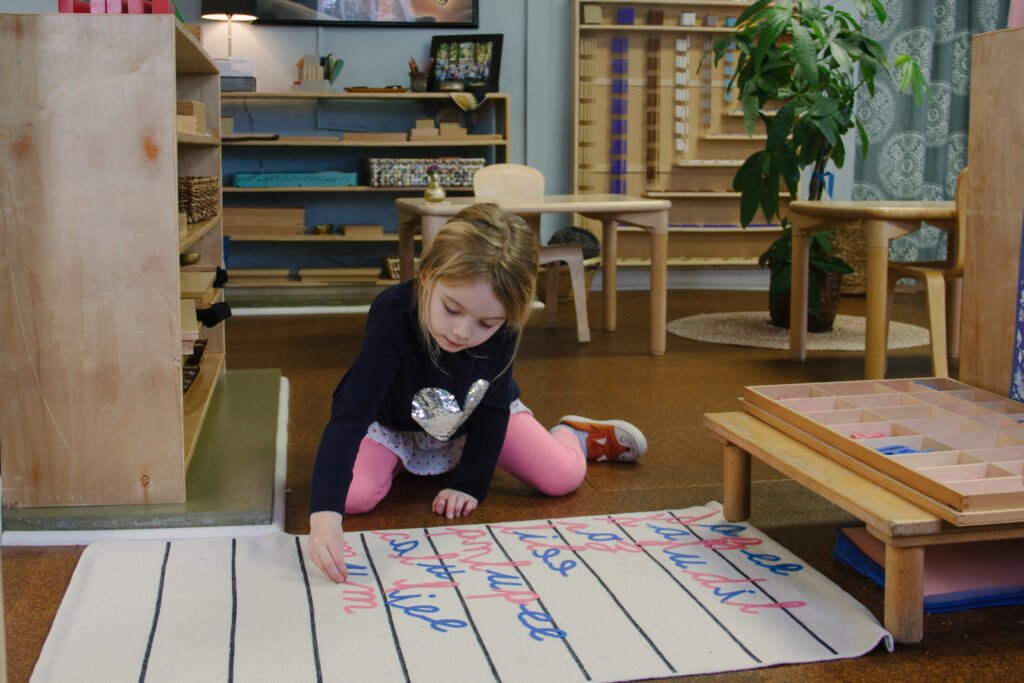

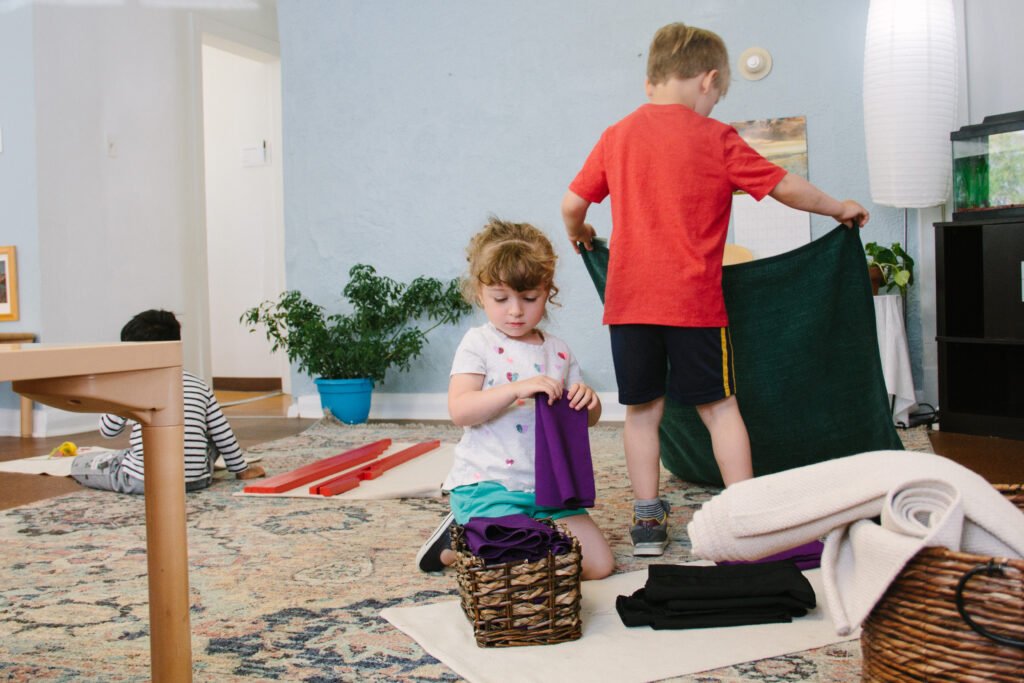
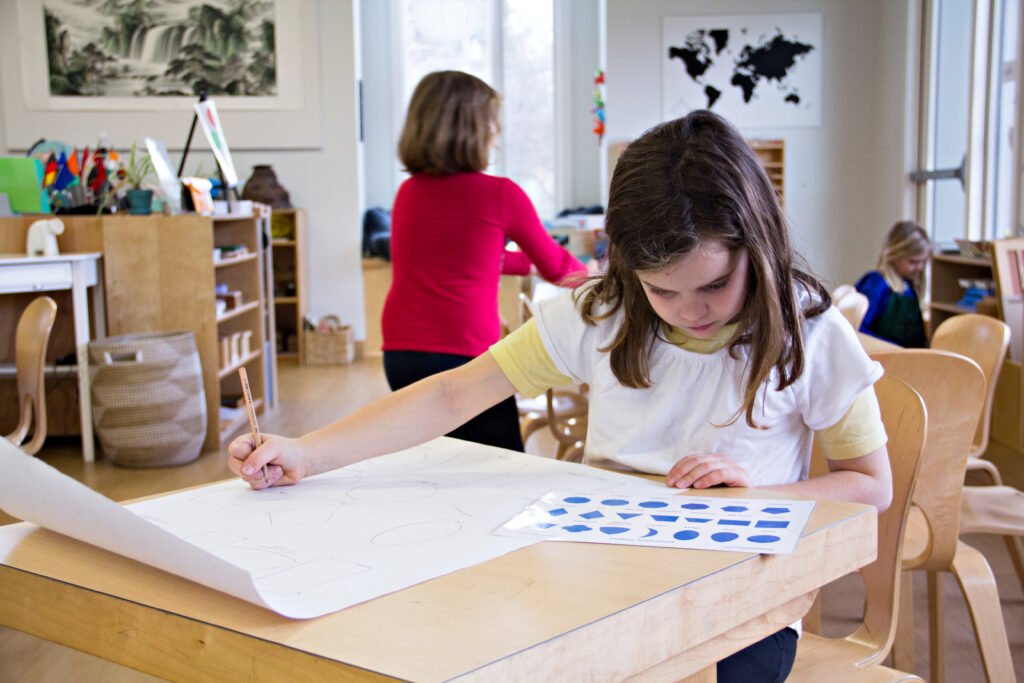
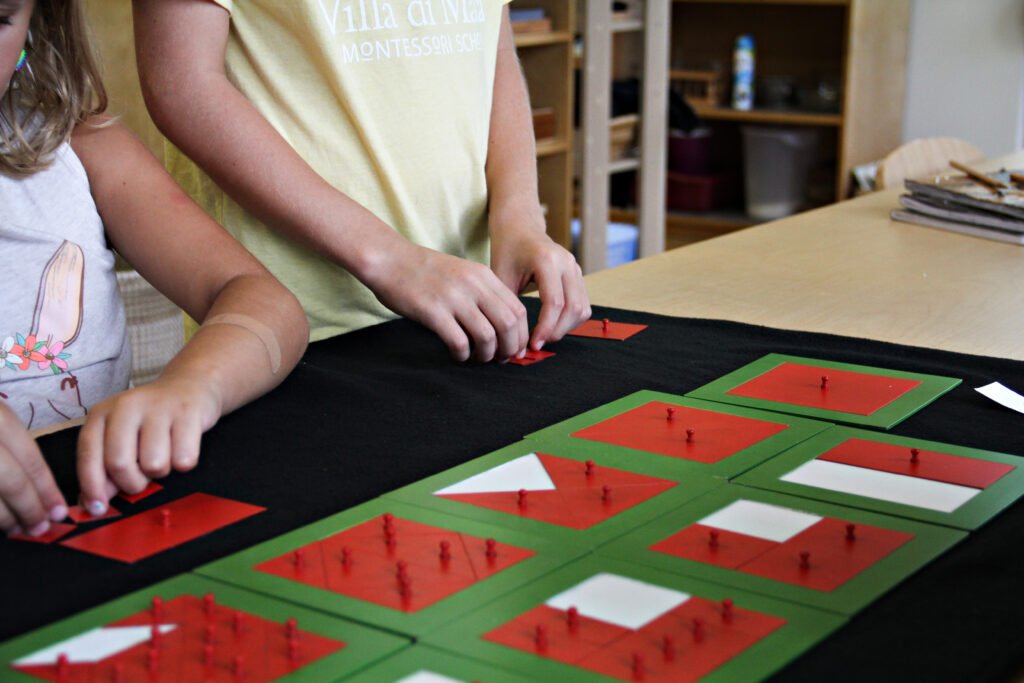
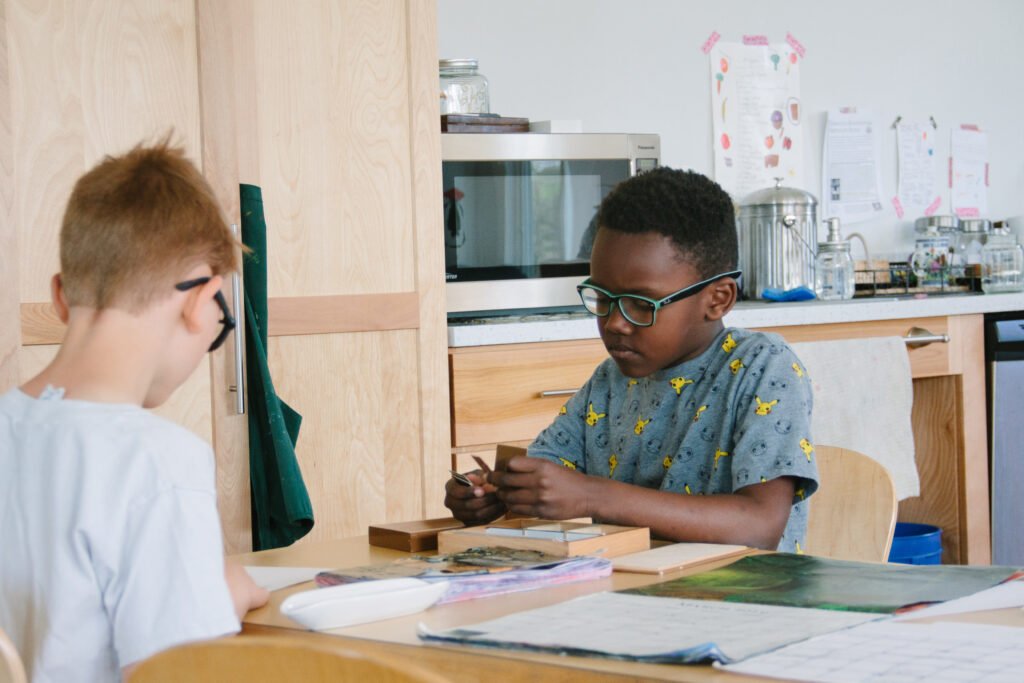
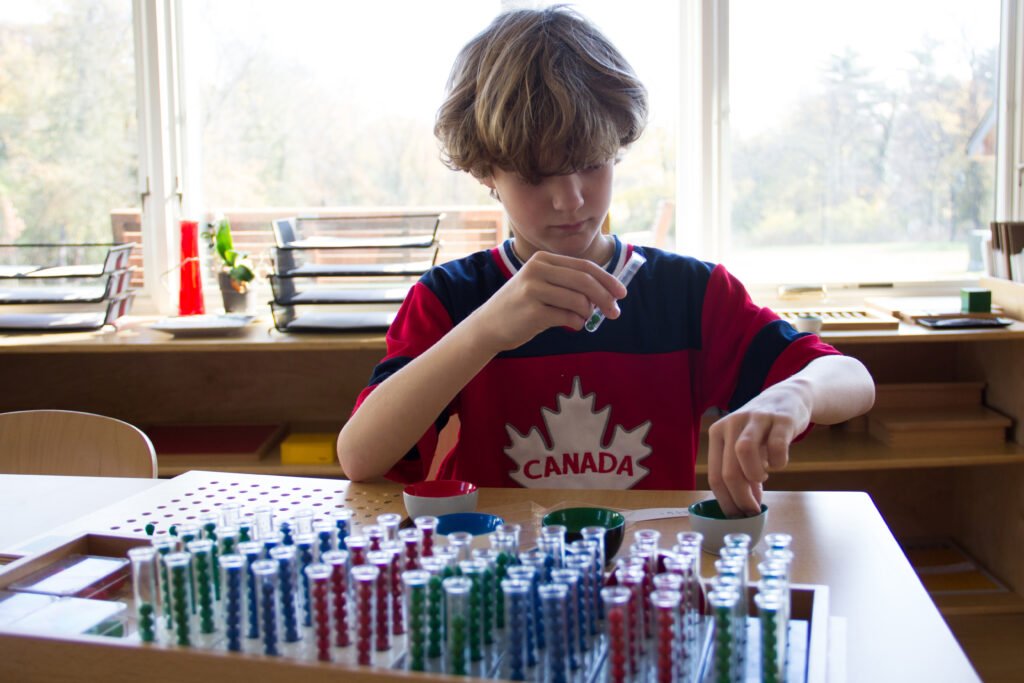
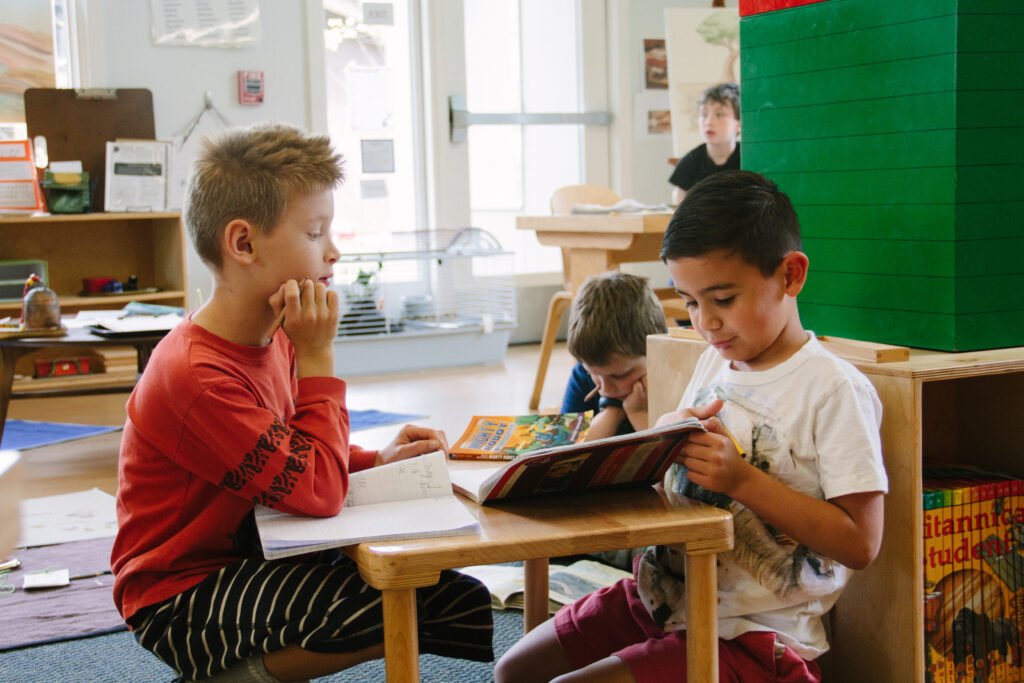
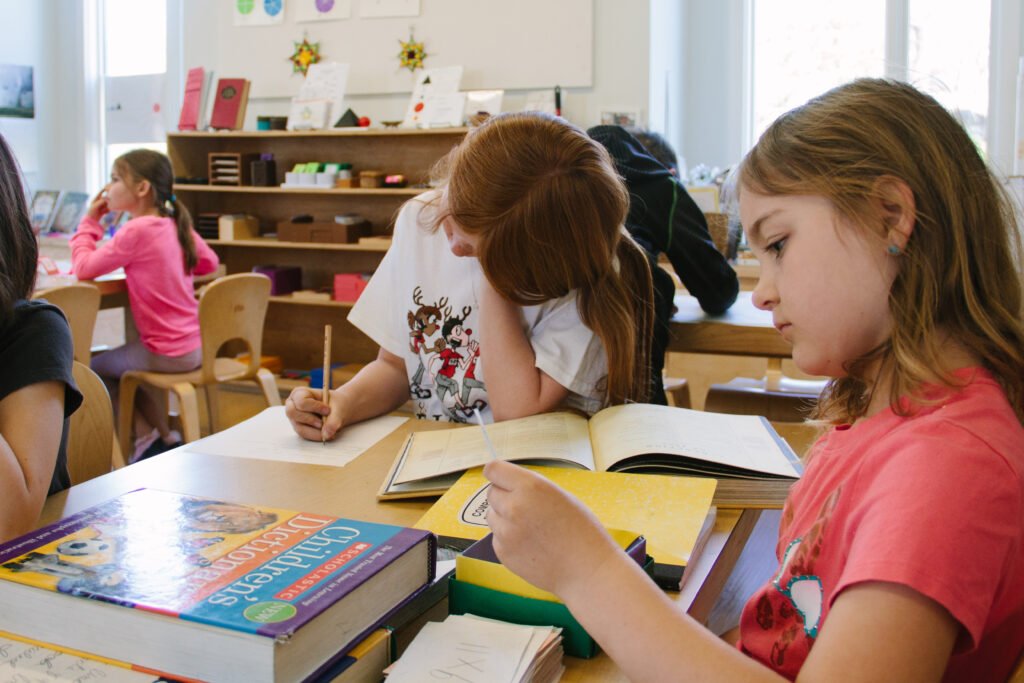
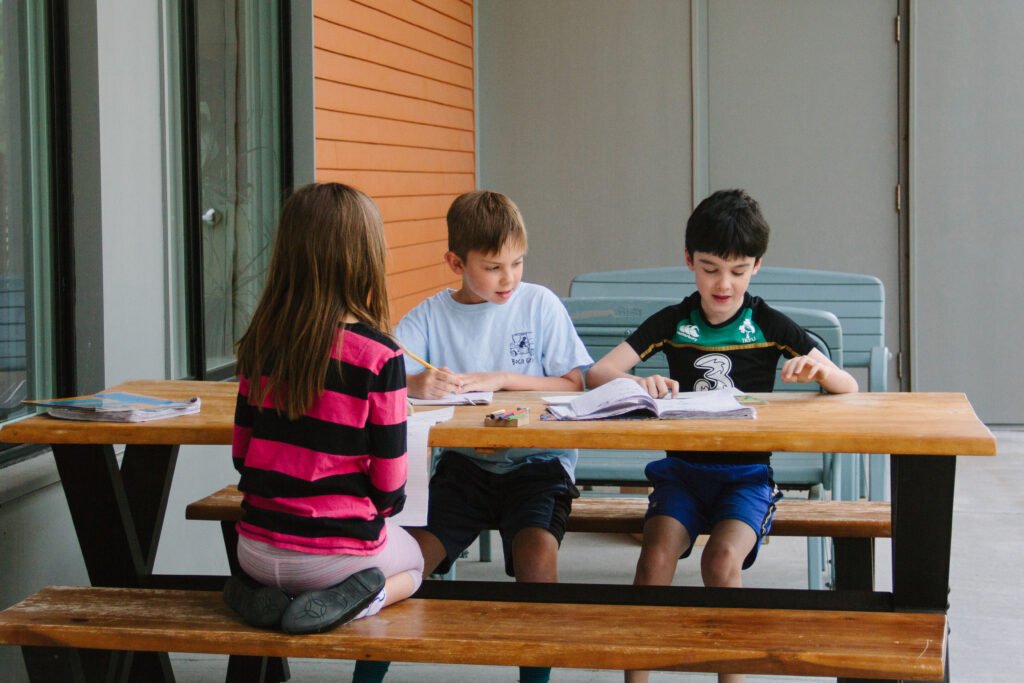
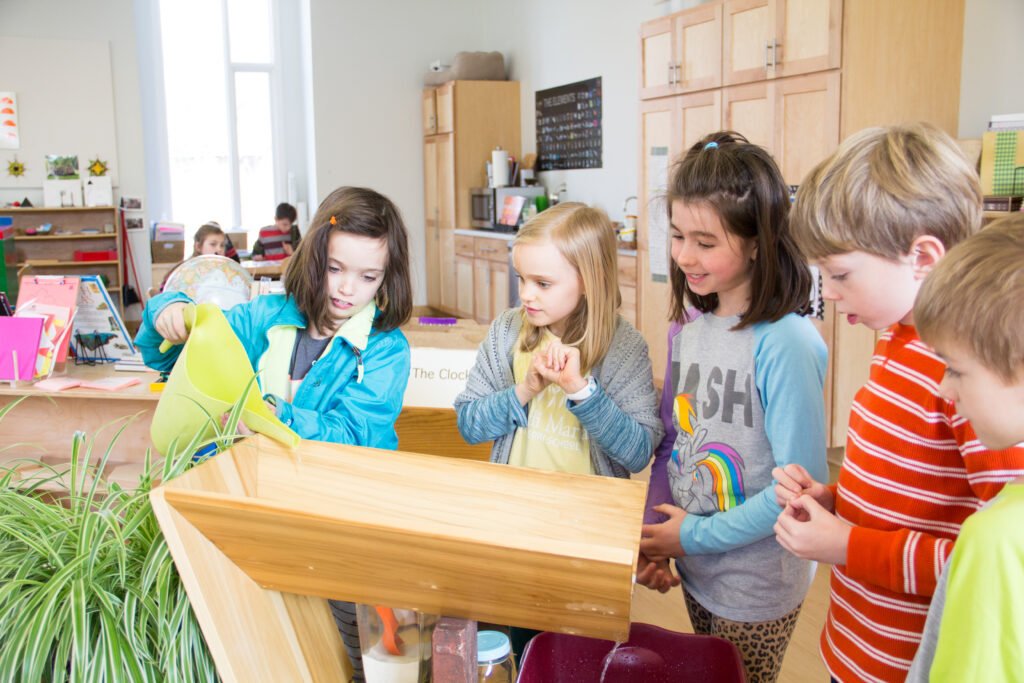
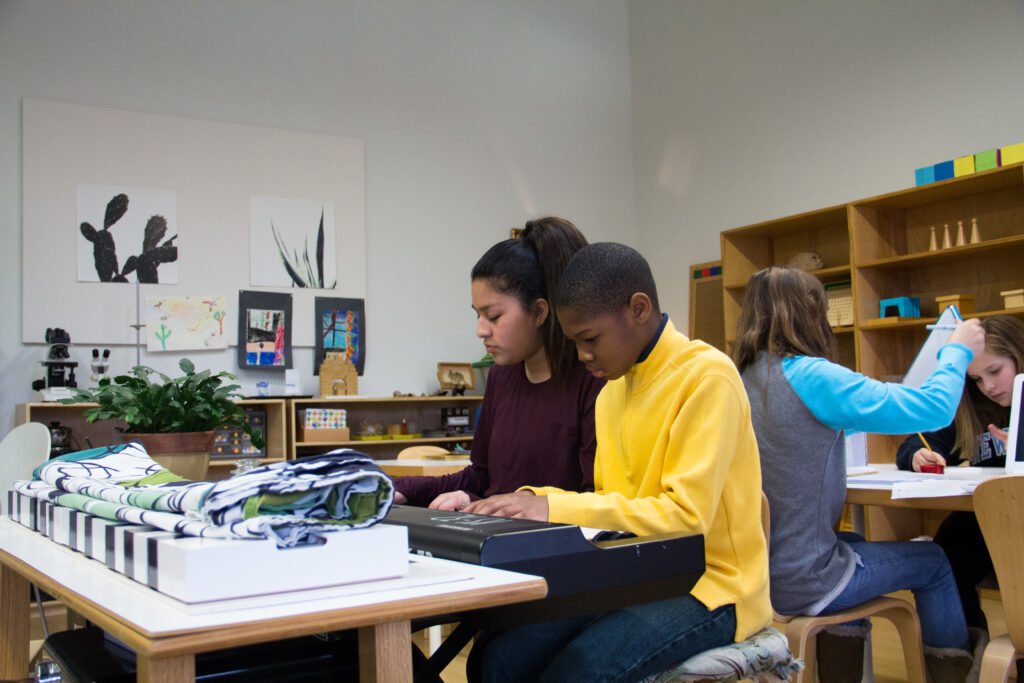

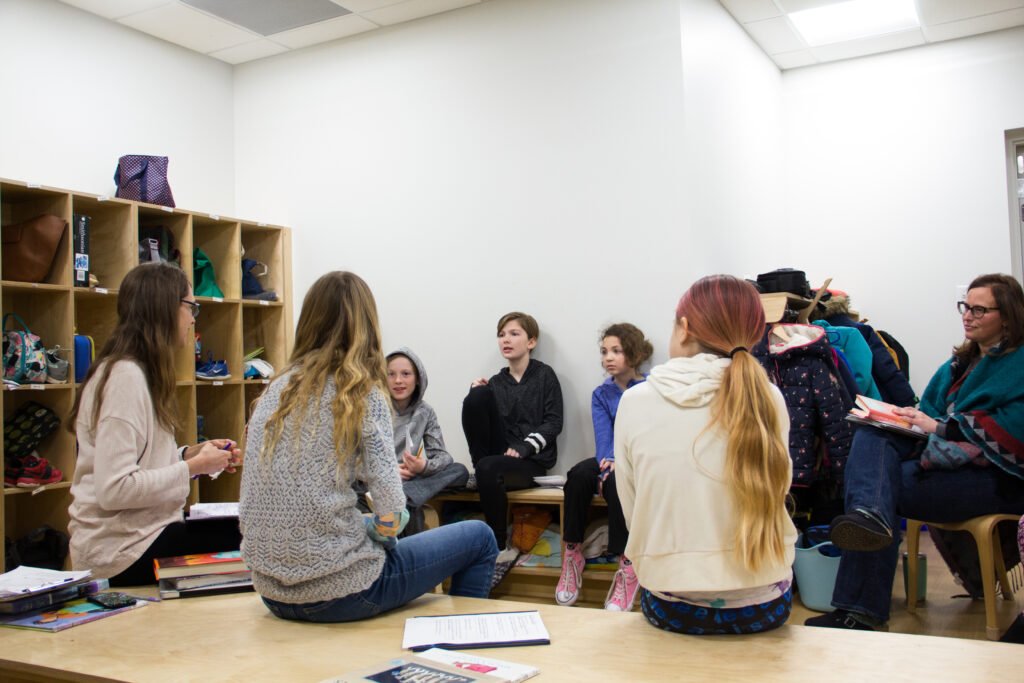
 Happy summer and here's to 2019-2020!
Happy summer and here's to 2019-2020!
 For all you parents who take home bunches and bunches of rolled up easel paintings… For those who adore them… For those who wonder what to do with a giant sheet of paper with random blue lines on it…Rest assured, Easel Painting is not presented as painting a picture and producing a picture is not the point of the lesson. This is a lesson that pulls together many of the skills from Practical Life work (think: pouring, folding, scrubbing). Painting is appealing to children and pulls them into practicing all of these wonderful practical life skills.
For all you parents who take home bunches and bunches of rolled up easel paintings… For those who adore them… For those who wonder what to do with a giant sheet of paper with random blue lines on it…Rest assured, Easel Painting is not presented as painting a picture and producing a picture is not the point of the lesson. This is a lesson that pulls together many of the skills from Practical Life work (think: pouring, folding, scrubbing). Painting is appealing to children and pulls them into practicing all of these wonderful practical life skills.


 Easel Painting is an engaging and attractive gross motor activity. Children often start by making lines or swirls, some fill every inch of the paper. The big cross body movements that can be done while painting on a large easel engage both hemispheres of the brain.
Easel Painting is an engaging and attractive gross motor activity. Children often start by making lines or swirls, some fill every inch of the paper. The big cross body movements that can be done while painting on a large easel engage both hemispheres of the brain.
 Assistant Head of School, Robyn Milos shares, "for children it's always about the process, not the product. After the painting is hung up to dry, the child often forgets about it, because that's when they start the detailed work of cleaning up. The process of setting up the clean-up work, washing the easel, going on a hunt for all the drips of paint, and then pouring out, rinsing the bowl, cleaning the basin….”She continues, “The bulk of the benefit for the child comes in the clean-up process. Some children clean the easel with the same motions used for scrubbing a table. Some do it as a science experiment, watching how the water dries on the easel and writing on the dry easel with a wet sponge. You often see the true concentration happening during clean-up.”
Assistant Head of School, Robyn Milos shares, "for children it's always about the process, not the product. After the painting is hung up to dry, the child often forgets about it, because that's when they start the detailed work of cleaning up. The process of setting up the clean-up work, washing the easel, going on a hunt for all the drips of paint, and then pouring out, rinsing the bowl, cleaning the basin….”She continues, “The bulk of the benefit for the child comes in the clean-up process. Some children clean the easel with the same motions used for scrubbing a table. Some do it as a science experiment, watching how the water dries on the easel and writing on the dry easel with a wet sponge. You often see the true concentration happening during clean-up.”
 So, when your child’s guide hands you that bunch of easel paintings at the end of the year, smile and think of the work and concentration represented in these crunchy, sometimes difficult to unroll paintings.Melinda, these pictures paint a picture themselves. Thank you! Robyn, thank you for sharing your insights and experience!
So, when your child’s guide hands you that bunch of easel paintings at the end of the year, smile and think of the work and concentration represented in these crunchy, sometimes difficult to unroll paintings.Melinda, these pictures paint a picture themselves. Thank you! Robyn, thank you for sharing your insights and experience!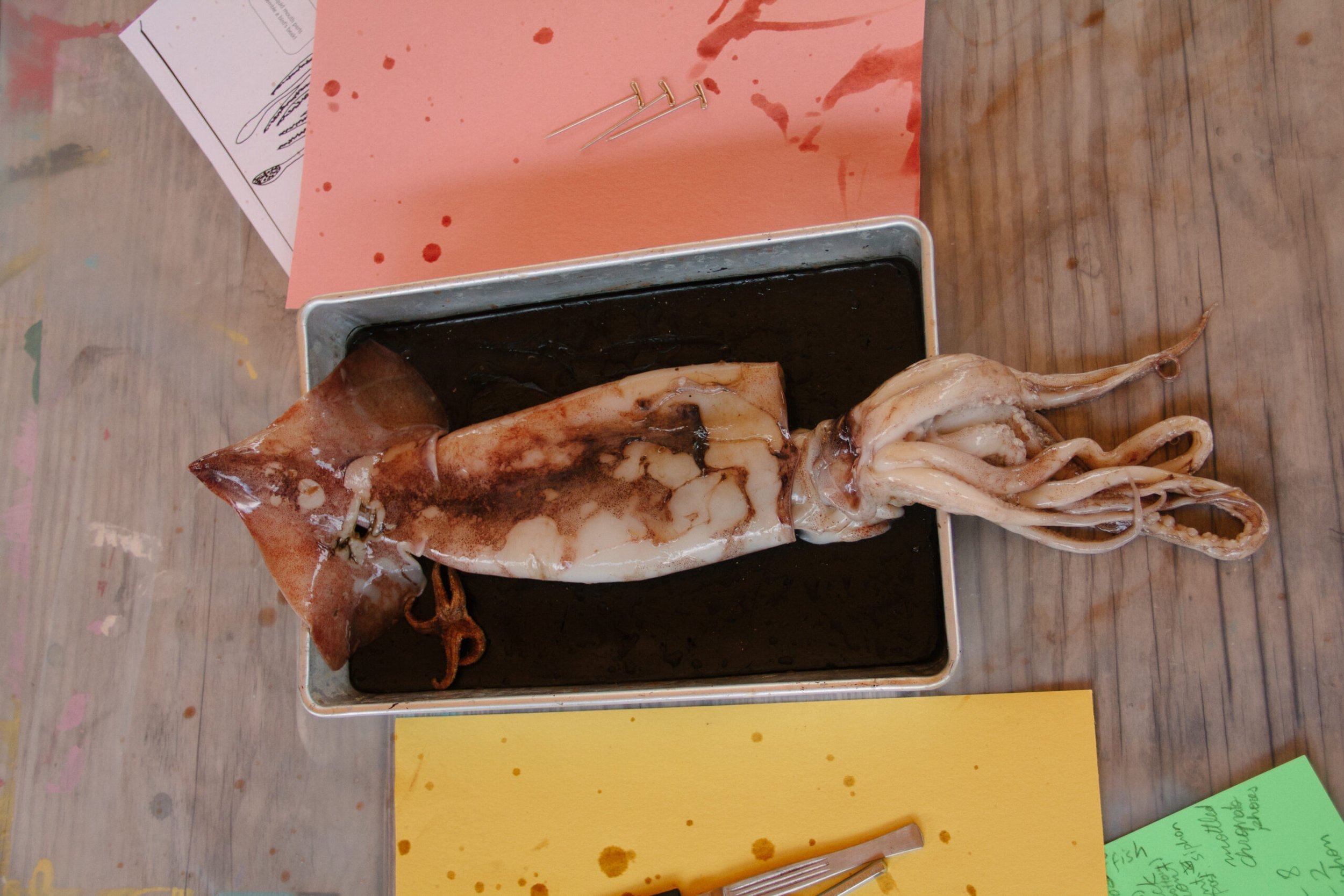
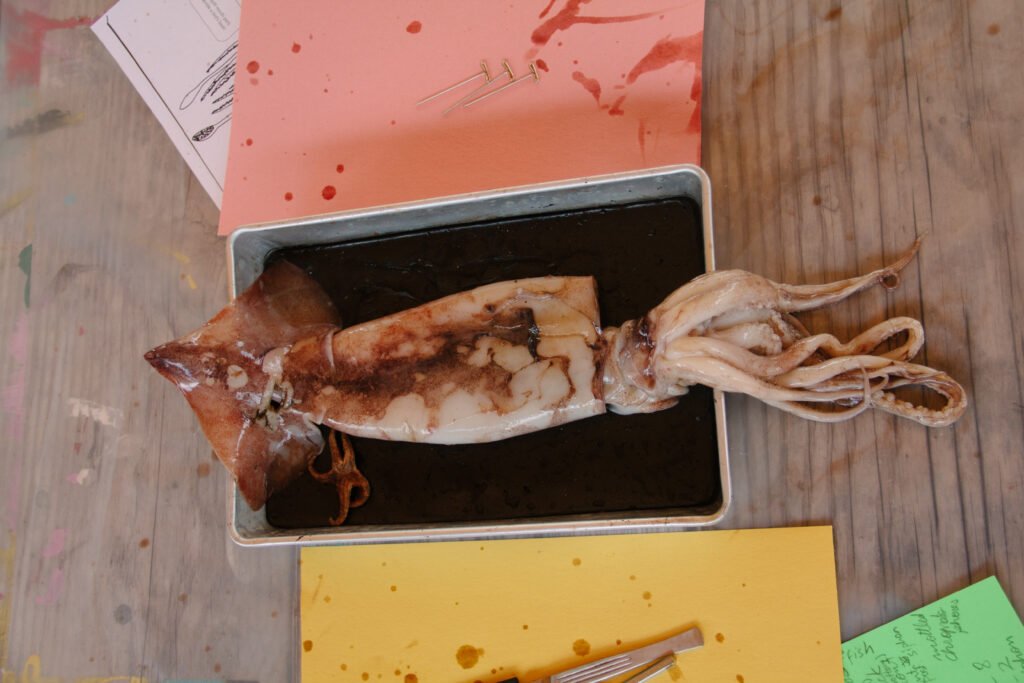
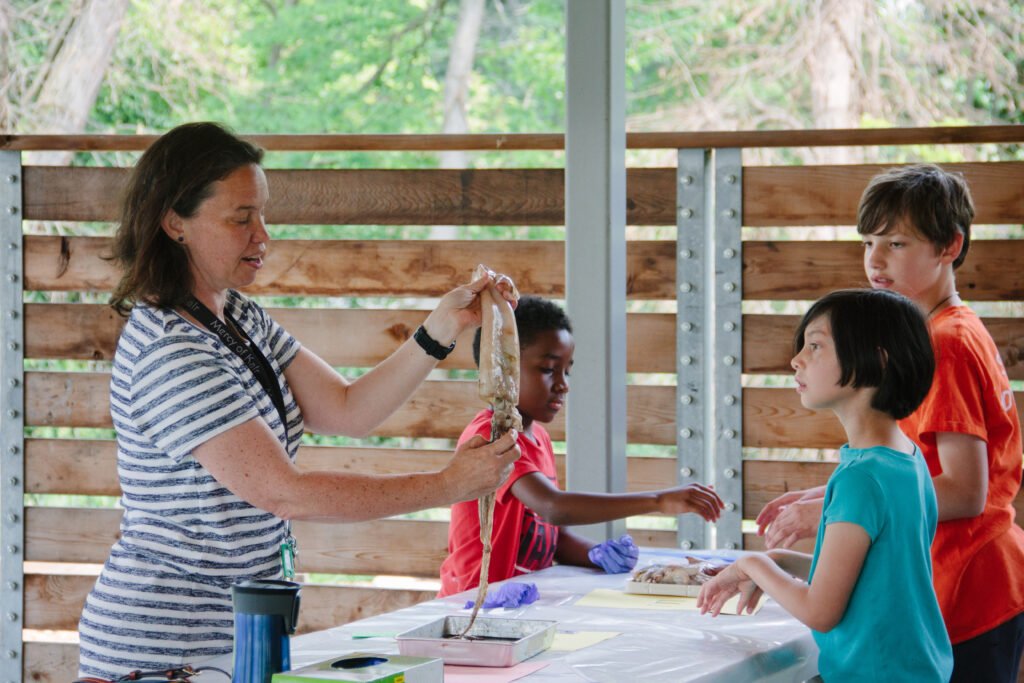

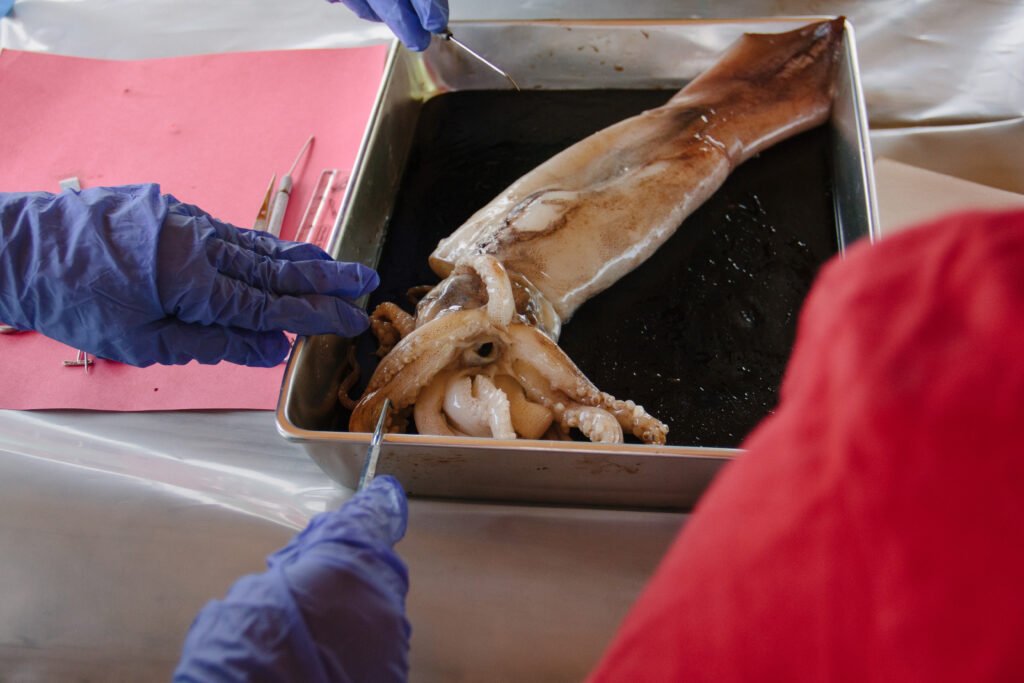
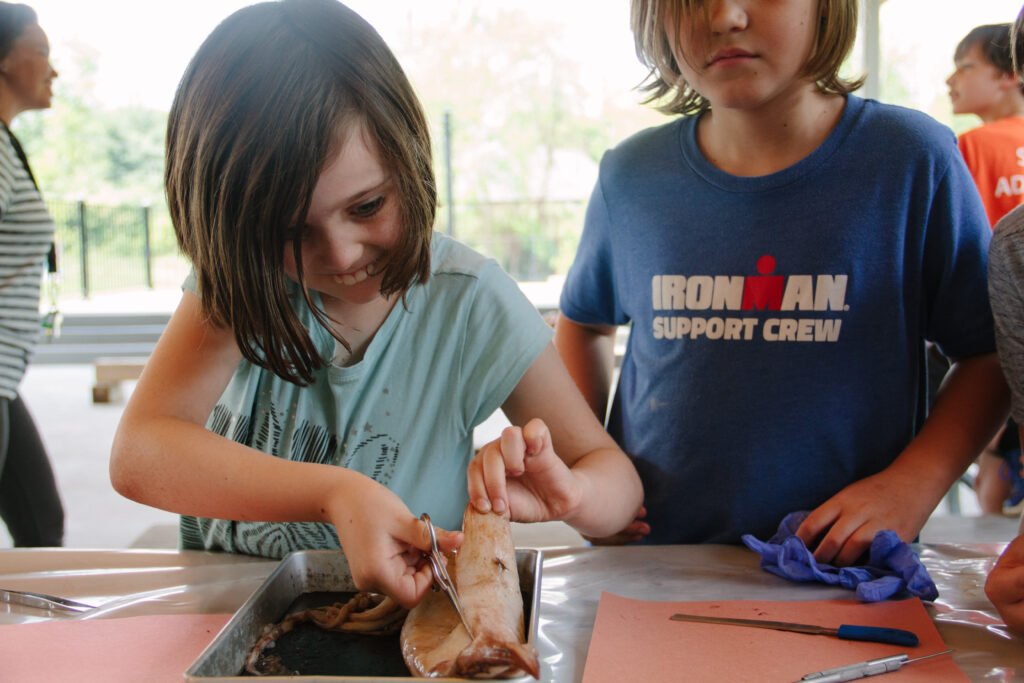
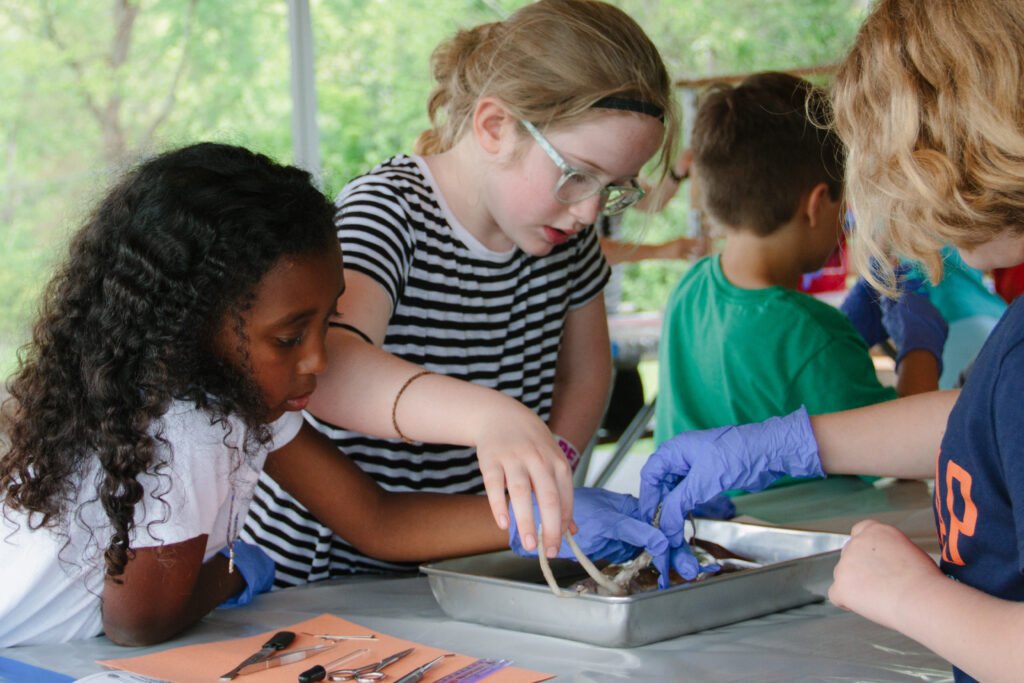
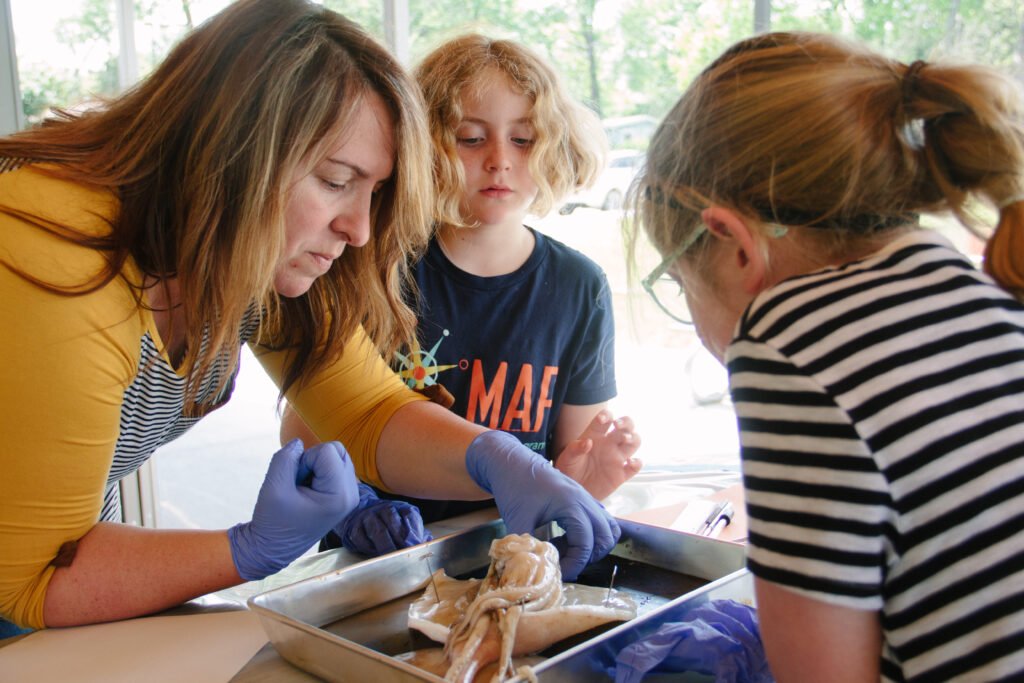
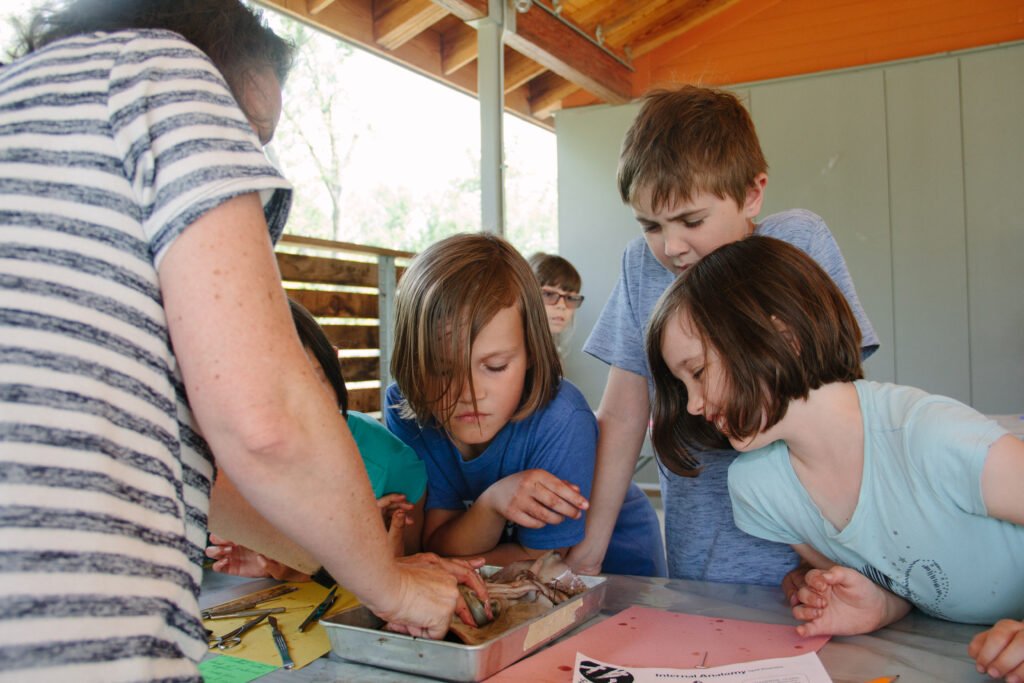
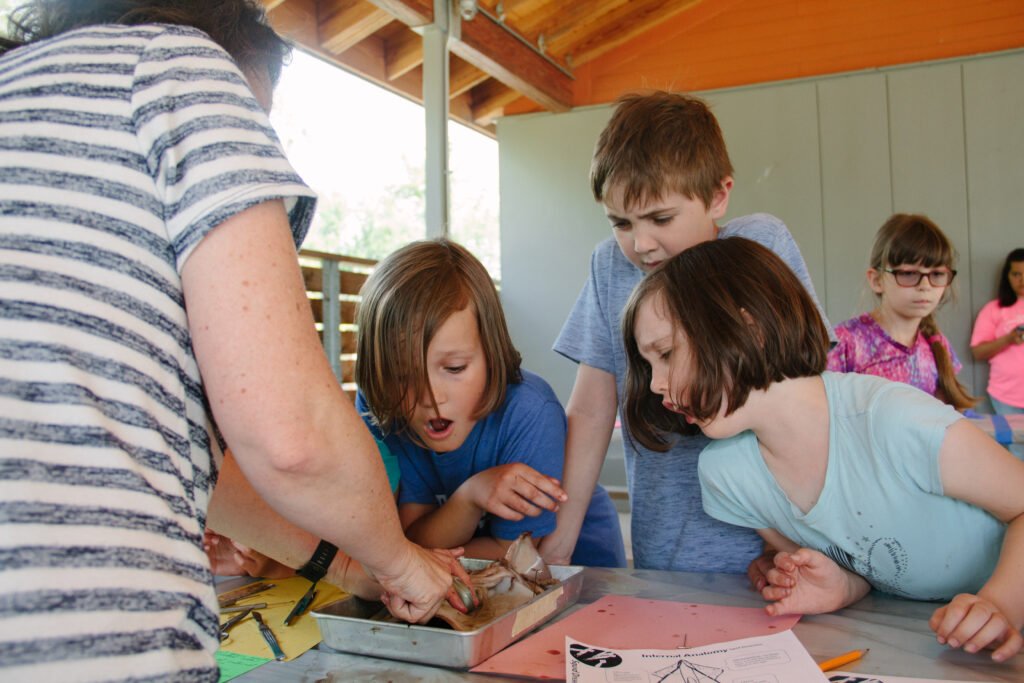 The exploration is guided at first, but then becomes more open ended. Some remove arms and examine the suckers, noting the tiny teeth-like ridges along their rim. Some slice open the livers and peruse the mess the organ makes in their pan. They become attached to their discoveries, and ask if they can take pieces home with them. (We tell them you do not want random squid parts in your home - you’re welcome).
The exploration is guided at first, but then becomes more open ended. Some remove arms and examine the suckers, noting the tiny teeth-like ridges along their rim. Some slice open the livers and peruse the mess the organ makes in their pan. They become attached to their discoveries, and ask if they can take pieces home with them. (We tell them you do not want random squid parts in your home - you’re welcome).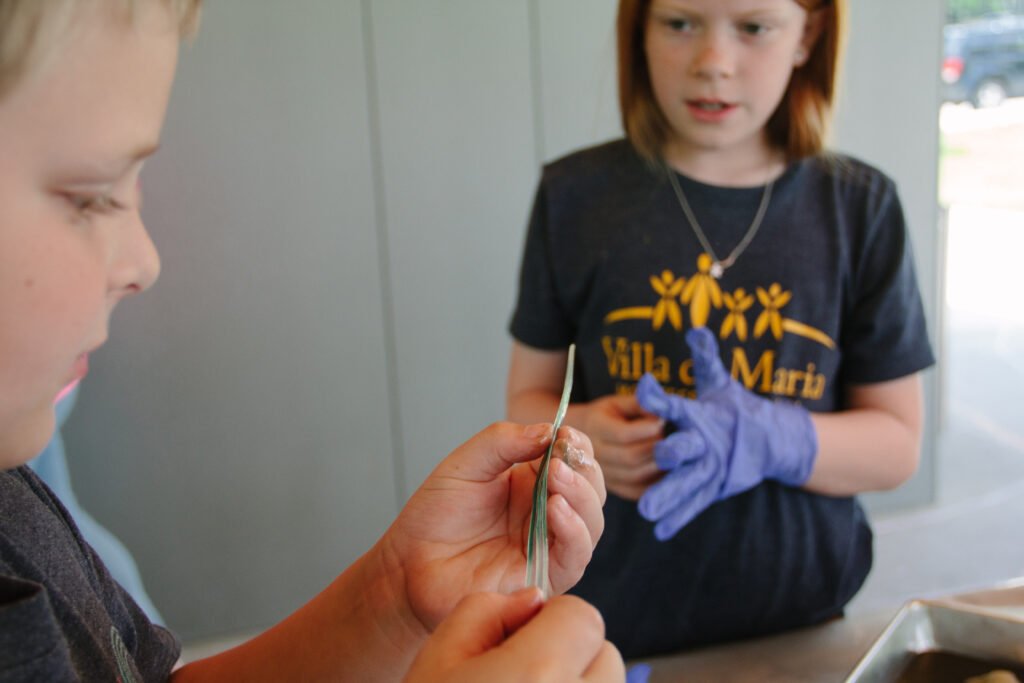
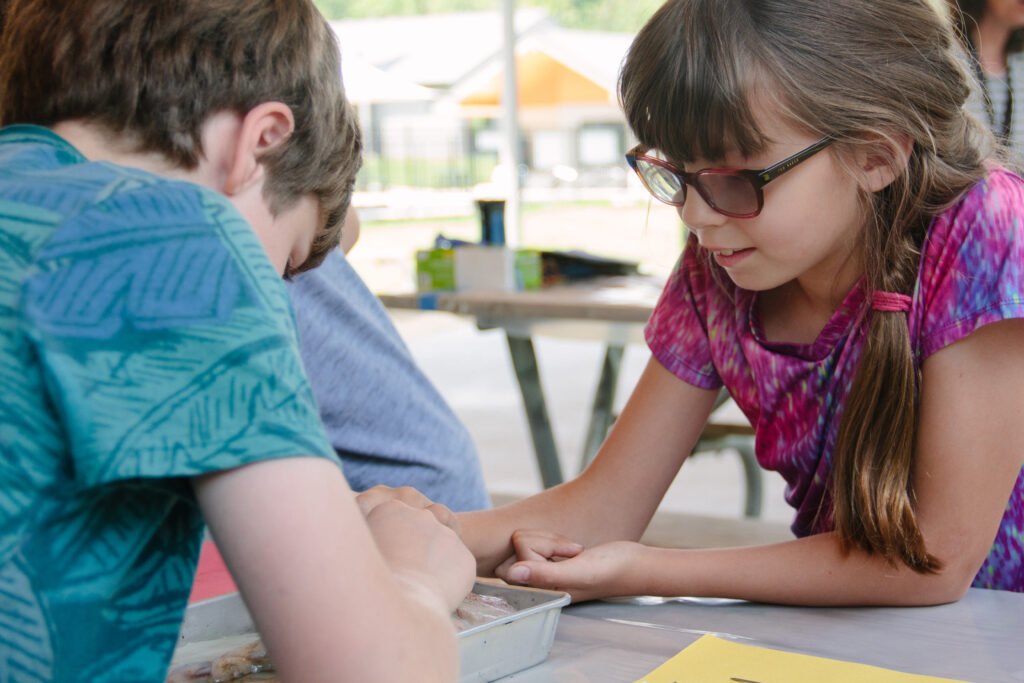
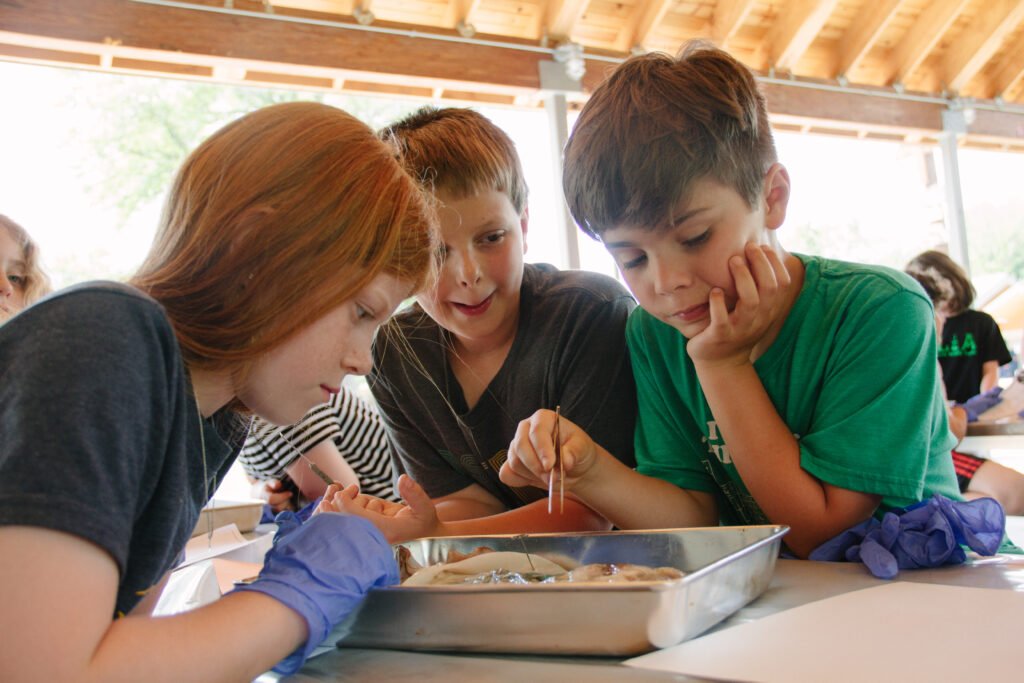
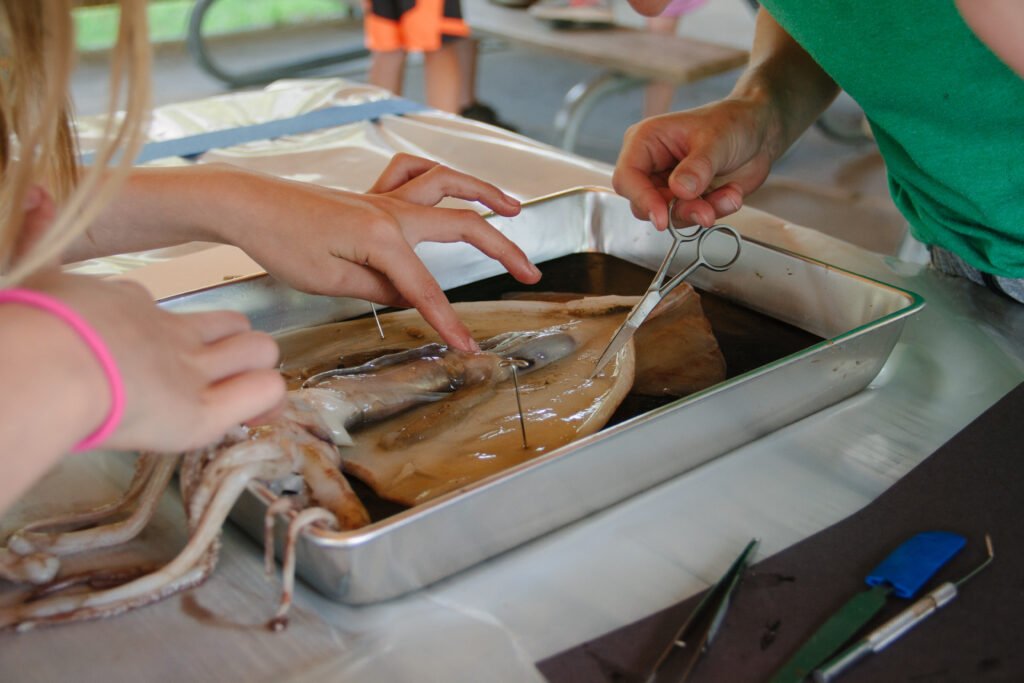
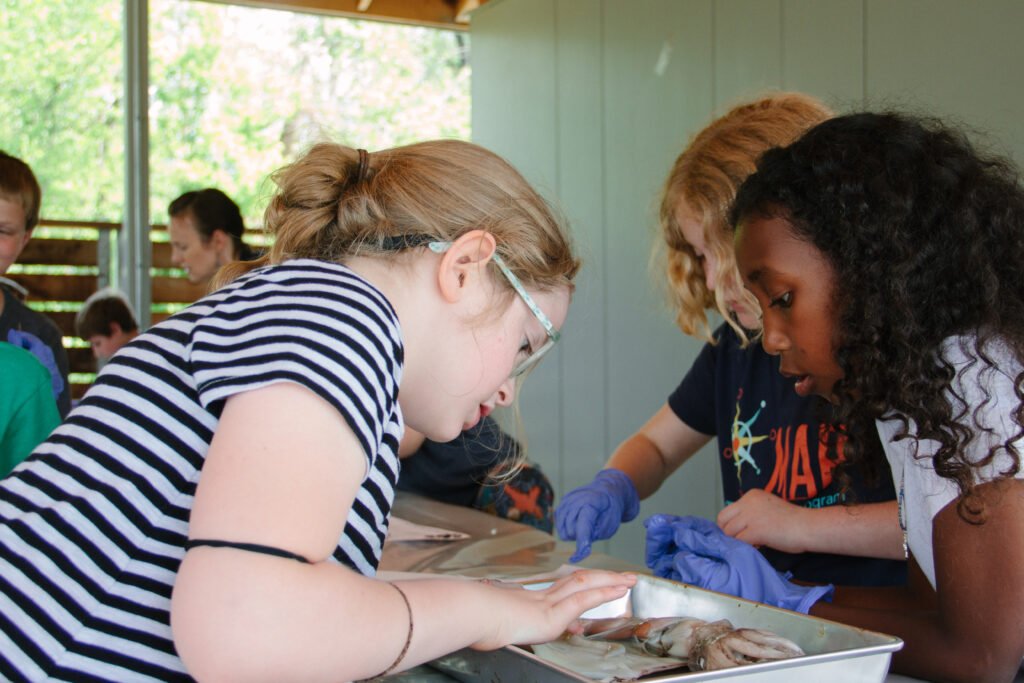 Then it comes time to close the cycle of activity. To clean up our work. The children are ebullient as they wash their tools, chattering, sharing their discoveries. They will have something to tell you about when they get home. And summer is one day closer.
Then it comes time to close the cycle of activity. To clean up our work. The children are ebullient as they wash their tools, chattering, sharing their discoveries. They will have something to tell you about when they get home. And summer is one day closer.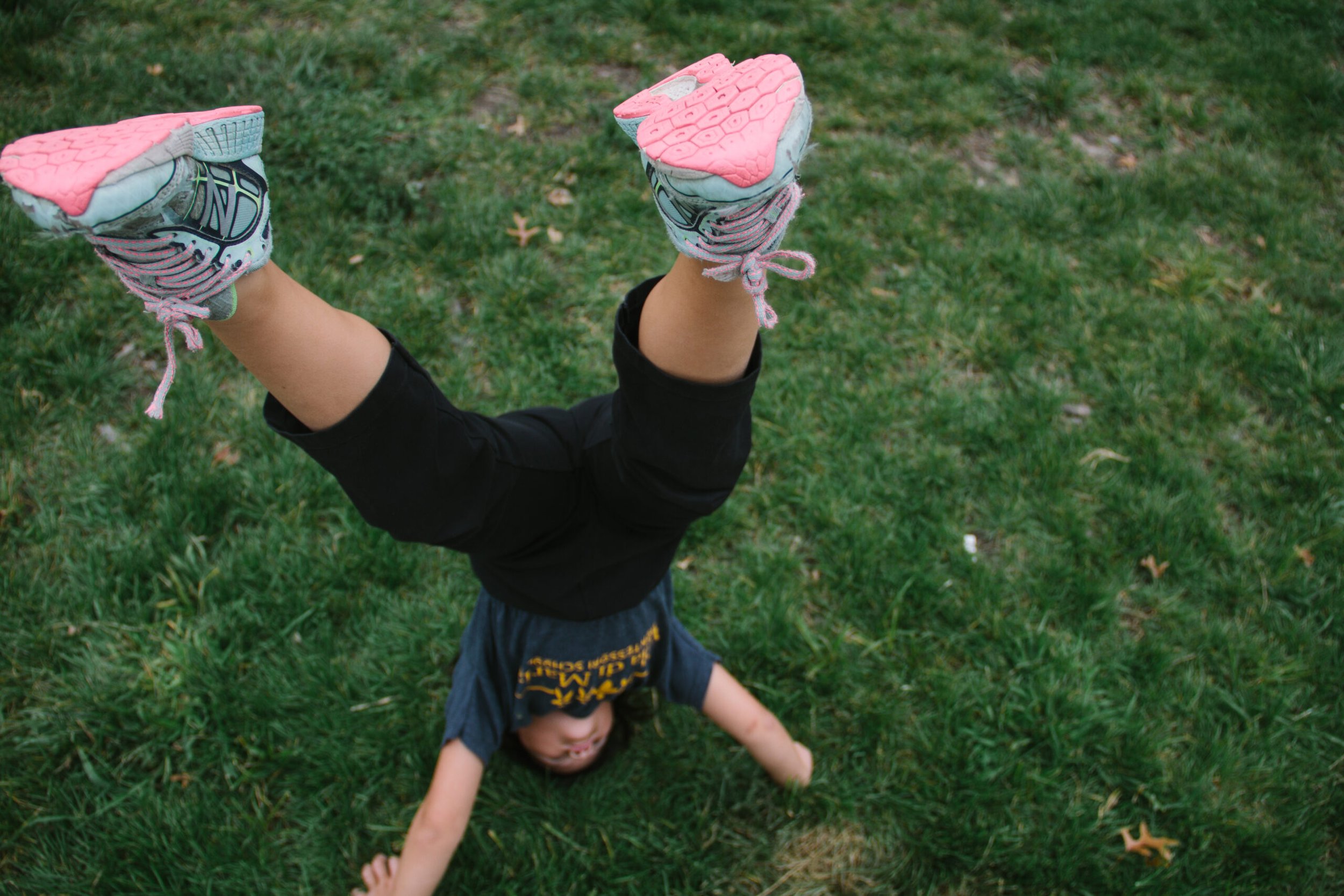
 Summer is on its way! Whether your child is headed to a summer at Camp Pegnita, days and days at home, or a combination of the two, life will work a little differently over the next few months.One way to frame the upcoming shift to summer is to think of a summer reboot. The idea is simple; use this change of routine as an excuse to work on (some of) the things in the life of your family that need a little love and attention.
Summer is on its way! Whether your child is headed to a summer at Camp Pegnita, days and days at home, or a combination of the two, life will work a little differently over the next few months.One way to frame the upcoming shift to summer is to think of a summer reboot. The idea is simple; use this change of routine as an excuse to work on (some of) the things in the life of your family that need a little love and attention.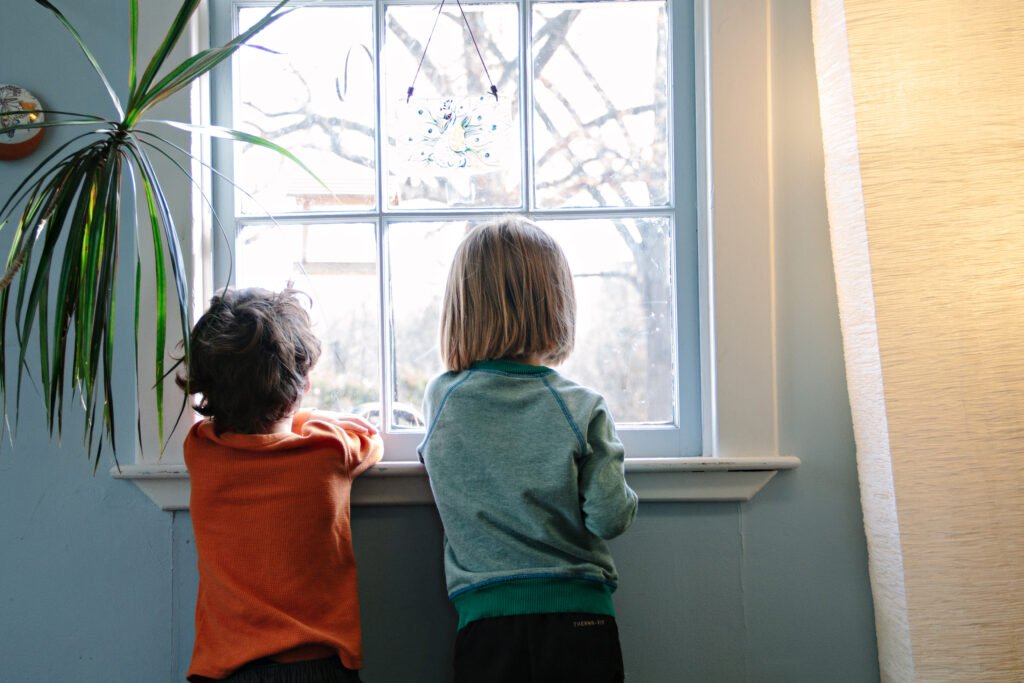 Take some time in this week before summer break to think about what is frustrating, what's just not working, or where growth is needed. Here are a few examples.... If table manners are driving you crazy make them your goal for the summer. If you're wanting your child to take on laundry or making their own breakfast, change the expectations for summer. Maybe it's time to share the task of doing dishes?Then go ahead and stop worrying about these things for the last week of school. The end of the year is hectic enough, let things slide knowing that you'll be working on them soon enough.
Take some time in this week before summer break to think about what is frustrating, what's just not working, or where growth is needed. Here are a few examples.... If table manners are driving you crazy make them your goal for the summer. If you're wanting your child to take on laundry or making their own breakfast, change the expectations for summer. Maybe it's time to share the task of doing dishes?Then go ahead and stop worrying about these things for the last week of school. The end of the year is hectic enough, let things slide knowing that you'll be working on them soon enough.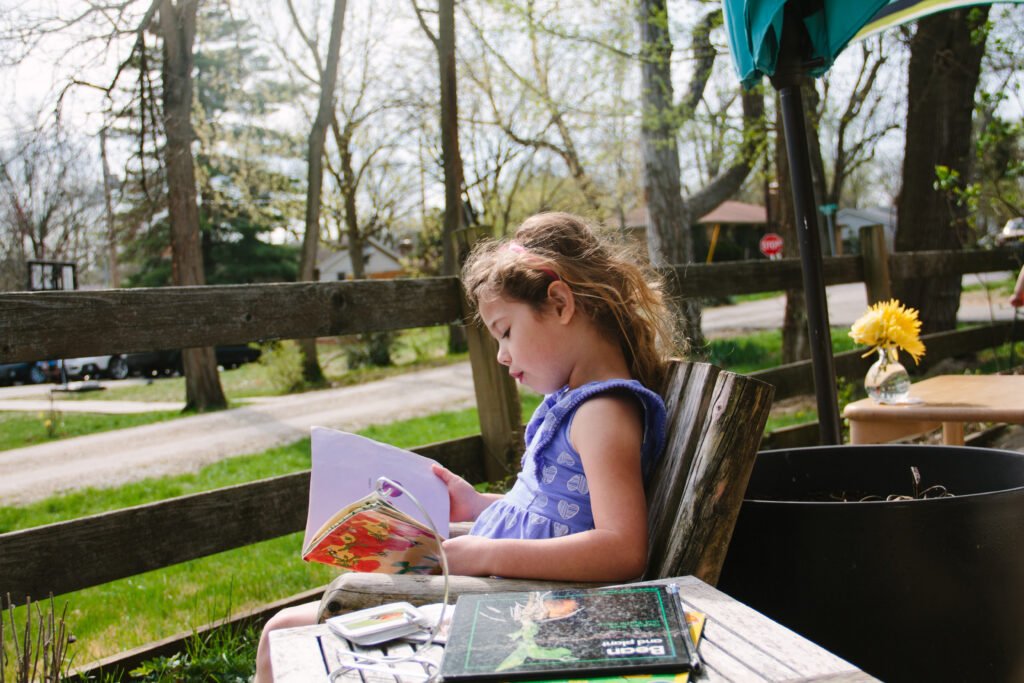 A short guide to making a go of the summer reboot:1) Be conscientious about how much you choose to work on over the summer. Depending on what your summer projects are one or two might be plenty. If you're choosing smaller things (putting away your shoes, washing your hands *every* time you use the bathroom), you might be able to do three.2) Make a manageable plan of how you're going to address these over the summer. For example, if you want to address table manners perhaps pick one meal to focus on. If you're working on laundry independence, take some time to make sure your set up allows for success.3) When you've made a plan - or just sketched out ideas - hold a family meeting. Gather everyone together and talk about the summer. Perhaps you'll take time to make a summer bucket list - going to the art museum, swimming, etc. Goals such as everyone doing their own laundry fit nicely into these types of conversations and lend to the understanding that summer brings many different things. Then give your children the chance to come up with tools or strategies to make the summer goals successful.4) Over the summer remember that what you're working on is what you're working on. You can't adjust everything at once. Keep focused on your goals and give your child - and yourself - the time to be successful.The reboot doesn't have to be relegated to summer. There's the new school year reboot, the birthday reboot ("Well, when you turn (fill in the blank age) next week you'll be old enough to unload the dishwasher!"), the half-birthday reboot...Good luck!
A short guide to making a go of the summer reboot:1) Be conscientious about how much you choose to work on over the summer. Depending on what your summer projects are one or two might be plenty. If you're choosing smaller things (putting away your shoes, washing your hands *every* time you use the bathroom), you might be able to do three.2) Make a manageable plan of how you're going to address these over the summer. For example, if you want to address table manners perhaps pick one meal to focus on. If you're working on laundry independence, take some time to make sure your set up allows for success.3) When you've made a plan - or just sketched out ideas - hold a family meeting. Gather everyone together and talk about the summer. Perhaps you'll take time to make a summer bucket list - going to the art museum, swimming, etc. Goals such as everyone doing their own laundry fit nicely into these types of conversations and lend to the understanding that summer brings many different things. Then give your children the chance to come up with tools or strategies to make the summer goals successful.4) Over the summer remember that what you're working on is what you're working on. You can't adjust everything at once. Keep focused on your goals and give your child - and yourself - the time to be successful.The reboot doesn't have to be relegated to summer. There's the new school year reboot, the birthday reboot ("Well, when you turn (fill in the blank age) next week you'll be old enough to unload the dishwasher!"), the half-birthday reboot...Good luck!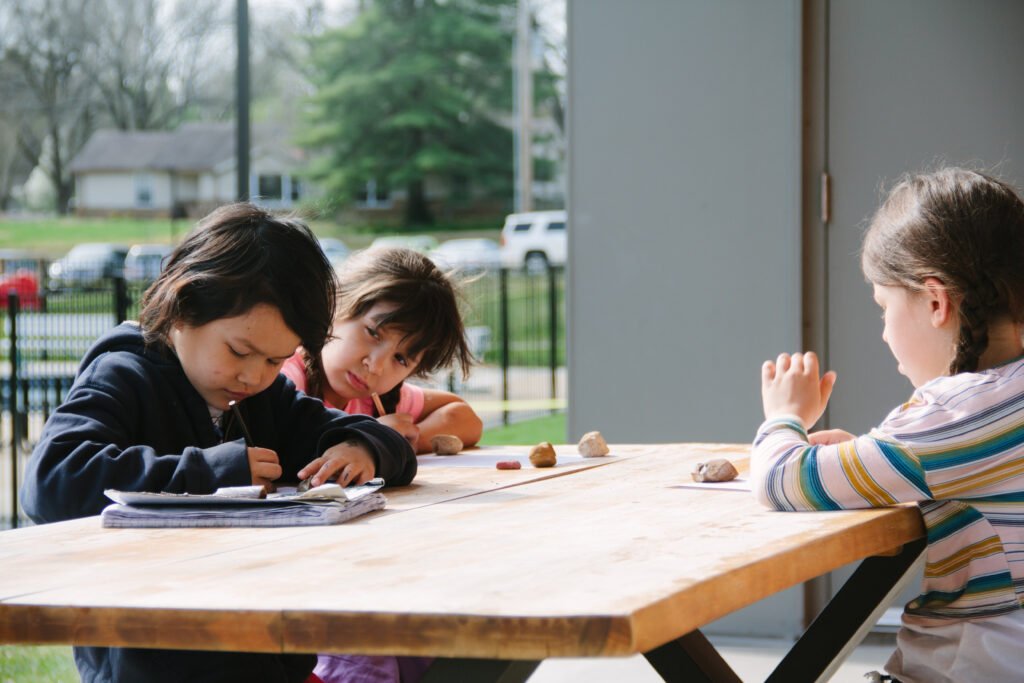 Melinda, your photos need no rebooting! They perfectly capture the lives of these beautiful children.
Melinda, your photos need no rebooting! They perfectly capture the lives of these beautiful children.
 The weather was just warm enough to enjoy snow cones - yay!
The weather was just warm enough to enjoy snow cones - yay! Getting into the circus state of mind with red noses!
Getting into the circus state of mind with red noses! We were joined by some seriously skilled face painters!
We were joined by some seriously skilled face painters! And, a perennial favorite, balloon animals (and other creations!).
And, a perennial favorite, balloon animals (and other creations!).


 This year Circus Night fell on the same day as Give STL day, and we celebrated reaching (and surpassing!) our goal by ... giving our esteemed Head of School a pie in the face! She came prepared (read: she knew we'd knock this day of giving out of the park!) and took it like a champ.
This year Circus Night fell on the same day as Give STL day, and we celebrated reaching (and surpassing!) our goal by ... giving our esteemed Head of School a pie in the face! She came prepared (read: she knew we'd knock this day of giving out of the park!) and took it like a champ.


 Circus performers entranced their audience - laughter, giggles, and joy ensued!
Circus performers entranced their audience - laughter, giggles, and joy ensued!




 Perhaps the best part of the night was just hanging out with friends and enjoying our beautiful campus on a perfect night!
Perhaps the best part of the night was just hanging out with friends and enjoying our beautiful campus on a perfect night!


 The joy of Circus Night was captured brilliantly by the one and only Melinda Smith. Thank you Melinda!
The joy of Circus Night was captured brilliantly by the one and only Melinda Smith. Thank you Melinda!
 In Montessori we talk a lot about individuality. Children working at their own pace, children being met where they are, children learning through topics that interest them... But, collaboration is vital to any community's success and a crucial life skill for individuals.
In Montessori we talk a lot about individuality. Children working at their own pace, children being met where they are, children learning through topics that interest them... But, collaboration is vital to any community's success and a crucial life skill for individuals.
 Opportunities to practice teamwork - hand in hand with opportunities to practice negotiating the difficulties that can arise when working with others - are omnipresent in the Montessori environment. These experiences and the tools that children gain from them, prepare children for life beyond school.
Opportunities to practice teamwork - hand in hand with opportunities to practice negotiating the difficulties that can arise when working with others - are omnipresent in the Montessori environment. These experiences and the tools that children gain from them, prepare children for life beyond school.




 From carrying heavy objects to research to experiments, teamwork makes the dream work! We know this for our children, and we see it in our greater Villa di Maria community. Thank you for being part of our team!Photo credit to Jessie Braud and Melinda Smith.
From carrying heavy objects to research to experiments, teamwork makes the dream work! We know this for our children, and we see it in our greater Villa di Maria community. Thank you for being part of our team!Photo credit to Jessie Braud and Melinda Smith.
 Ingredients are gathered and added to the bowl.
Ingredients are gathered and added to the bowl.

 Everything is carefully mixed together.
Everything is carefully mixed together.

 Scraping the spoon to get all the dough possible to work with!
Scraping the spoon to get all the dough possible to work with!





 Kneading...
Kneading... Cutting out the biscuits.
Cutting out the biscuits.





 Biscuits are then baked (with adult help!) and are ready to be enjoyed. Thank you Ms. McAuley for sharing your biscuit making lesson with us!Thank you Melinda for sharing your photos which so perfectly tell the story of baking in the Children's House.
Biscuits are then baked (with adult help!) and are ready to be enjoyed. Thank you Ms. McAuley for sharing your biscuit making lesson with us!Thank you Melinda for sharing your photos which so perfectly tell the story of baking in the Children's House.
 Walking through Villa di Maria’s campus is striking to experience. Growth is visible in the new facilities; the Magic Circle beckons with its inviting benches; there is no shortage of space to run, play and explore. Look inside any of the buildings and you’re met with stunning classrooms full of beautiful, well-crafted materials. Best of all, inside and out there are children who are thriving in these environments which have been diligently set up to meet their needs. This is truly a place of great joy.Villa di Maria is lucky to have an active and supportive community that brings the Montessori vision to reality. One of the many facets of our community is that we collectively make seemingly impossible things possible. This includes supporting the school’s long-standing commitment to being as affordable as possible. As tuition does not cover the cost of all that Villa di Maria provides, we have kicked off The Fund for Villa di Maria and are asking that you join us in supporting the future of our school. Below Jade Venditte, VdM’s Director of Development, Diversity and Inclusion answers some frequently asked questions around The Fund.
Walking through Villa di Maria’s campus is striking to experience. Growth is visible in the new facilities; the Magic Circle beckons with its inviting benches; there is no shortage of space to run, play and explore. Look inside any of the buildings and you’re met with stunning classrooms full of beautiful, well-crafted materials. Best of all, inside and out there are children who are thriving in these environments which have been diligently set up to meet their needs. This is truly a place of great joy.Villa di Maria is lucky to have an active and supportive community that brings the Montessori vision to reality. One of the many facets of our community is that we collectively make seemingly impossible things possible. This includes supporting the school’s long-standing commitment to being as affordable as possible. As tuition does not cover the cost of all that Villa di Maria provides, we have kicked off The Fund for Villa di Maria and are asking that you join us in supporting the future of our school. Below Jade Venditte, VdM’s Director of Development, Diversity and Inclusion answers some frequently asked questions around The Fund. What is The Fund for Villa di Maria?The Fund for Villa di Maria is an annual giving campaign raising money for the school’s current-year operating expenses. Gifts to The Fund make up the difference between what tuition covers and the actual cost of running the school. These dollars pay teacher salaries and benefits, classroom materials, continuing education, caring for the grounds and necessities such as toilet paper and light bulbs!My family is already paying tuition. What does my child get when we donate money as well?Gifts are necessary because tuition does not cover the cost of everything we offer at Villa di Maria. It supports the people and programs that make Villa di Maria so special. This means exceptionally trained guides and directresses (aka teachers). Beautiful environments. Authentic Montessori materials. Real-world experiences.
What is The Fund for Villa di Maria?The Fund for Villa di Maria is an annual giving campaign raising money for the school’s current-year operating expenses. Gifts to The Fund make up the difference between what tuition covers and the actual cost of running the school. These dollars pay teacher salaries and benefits, classroom materials, continuing education, caring for the grounds and necessities such as toilet paper and light bulbs!My family is already paying tuition. What does my child get when we donate money as well?Gifts are necessary because tuition does not cover the cost of everything we offer at Villa di Maria. It supports the people and programs that make Villa di Maria so special. This means exceptionally trained guides and directresses (aka teachers). Beautiful environments. Authentic Montessori materials. Real-world experiences. Wait, we aren’t simply raising money for a chicken coop?Nope. The school needs to raise much more than a chicken coop. BUT! Fundraising should be FUN! By coming together to close the tuition gap, we are strengthening our community tangibly, but also creating a sense of collective impact. It’s motivating to have a goal and fun for the children to see that when we all work together, we can achieve great things! The chickens are a reward that is meaningful and will impact care of the environment for years to come!How does financial aid fit into the fundraising picture?Your gifts help VdM offer the financial aid that supports an economically diverse student body. The Fund for Villa di Maria is raising money for operating costs, and that means that the school has more funds available to offer financial aid. Your gifts make the school affordable to a wider range of students, bringing the benefits of social and economic diversity to the community .How much difference can my gift make?As a small independent school, VdM has many fewer supporters than a university or a larger charity. Your gifts to Villa di Maria are an investment that truly has a high return. And, because the number of people who will give is small but the need is large, every gift counts even more.
Wait, we aren’t simply raising money for a chicken coop?Nope. The school needs to raise much more than a chicken coop. BUT! Fundraising should be FUN! By coming together to close the tuition gap, we are strengthening our community tangibly, but also creating a sense of collective impact. It’s motivating to have a goal and fun for the children to see that when we all work together, we can achieve great things! The chickens are a reward that is meaningful and will impact care of the environment for years to come!How does financial aid fit into the fundraising picture?Your gifts help VdM offer the financial aid that supports an economically diverse student body. The Fund for Villa di Maria is raising money for operating costs, and that means that the school has more funds available to offer financial aid. Your gifts make the school affordable to a wider range of students, bringing the benefits of social and economic diversity to the community .How much difference can my gift make?As a small independent school, VdM has many fewer supporters than a university or a larger charity. Your gifts to Villa di Maria are an investment that truly has a high return. And, because the number of people who will give is small but the need is large, every gift counts even more. Note: This content is inspired by the National Association of Independent School’s publication, The Gifts That Keep On Giving: Frequently unasked questions about why your independent school wants both tuition and a donation.
Note: This content is inspired by the National Association of Independent School’s publication, The Gifts That Keep On Giving: Frequently unasked questions about why your independent school wants both tuition and a donation.


















 Here's hoping we all get the chance to get dirty and plant with our children!
Here's hoping we all get the chance to get dirty and plant with our children!


 In the Racks and Tubes classroom they tasted a variety of Jewish foods. Latkas and toppings were prepared by the children that morning!
In the Racks and Tubes classroom they tasted a variety of Jewish foods. Latkas and toppings were prepared by the children that morning!
 The Upper Elementary classroom offered a hands on experience, making an Elijah's cup, after hearing about the ceremonial cup being left out at the Seder meal.
The Upper Elementary classroom offered a hands on experience, making an Elijah's cup, after hearing about the ceremonial cup being left out at the Seder meal.

 The final, and perhaps favorite station was in the Checkerboard classroom where parent, Dan Sweeney, shared the story of Passover. He warmed the students up by teaching them how to make some of the sounds of the Hebrew language and encouraging them to repeat the sounds all day. From there he delved into the story of Passover, leaving ample openings for children to chime in with what they knew or what they had questions about. They were rapt with his storytelling and fully engaged when he invited them to taste matzos and sparkling grape juice. He ended the session by showing what is served at a traditional Seder meal and explaining what each food symbolizes.
The final, and perhaps favorite station was in the Checkerboard classroom where parent, Dan Sweeney, shared the story of Passover. He warmed the students up by teaching them how to make some of the sounds of the Hebrew language and encouraging them to repeat the sounds all day. From there he delved into the story of Passover, leaving ample openings for children to chime in with what they knew or what they had questions about. They were rapt with his storytelling and fully engaged when he invited them to taste matzos and sparkling grape juice. He ended the session by showing what is served at a traditional Seder meal and explaining what each food symbolizes.

 The afternoon was an opportunity for some children to share their traditions and for others to learn something new. Our thanks to Dan, Diana, the entire Elementary staff, and Jade Venditte for putting this rich experience together for our children!
The afternoon was an opportunity for some children to share their traditions and for others to learn something new. Our thanks to Dan, Diana, the entire Elementary staff, and Jade Venditte for putting this rich experience together for our children!